Military cemeteries of WWI, part 1
This is first part of my report about various military cemeteries from WWI

I planed to prepare report about military cemeteries from WWI. But after exploration of my archives I saw that I have materials more than for
one report. So I will present two reports.
The motivation for these reports are my last report from Tauragė and recent news here in Lithuania that government plans to register and restore WWI cemeteries before 2014 or 2018 when world will mark 100th anniversary of WWI. This November world will mark 90th anniversary of the end of WWI.
WWI was probably the last war when fighting sides tried to obey old aristrocratic traditions of war. Of course, it was cruel and bloody war but sides tried to obey some rules. Between them is the treatment of killed persons and organization of cemeteries. For obvious reasons majority of those remaining cemeteries are German (the winner should take care about killed ones).
We will start this report from cemeteries in nowadays Poland, Warmian - Mazurian woewodship. This area was German East Prussia province at the that time. There I must to give honour for Polish authorities since even in PRL times they preserved majority of cemeteries built before WWII.
Our first point of stop is town Elk which at the times of WWI was called Lytzk. It was border town and together with other neighboring towns saw unsuccessful attack of Russian 1st and 2nd armies in 1914.
We are going into the military cemetery of Elk. But advertisement has clear error in Polish and Russian - I never heard about Soviet soldiers in 1914. Records in French and German are correct:
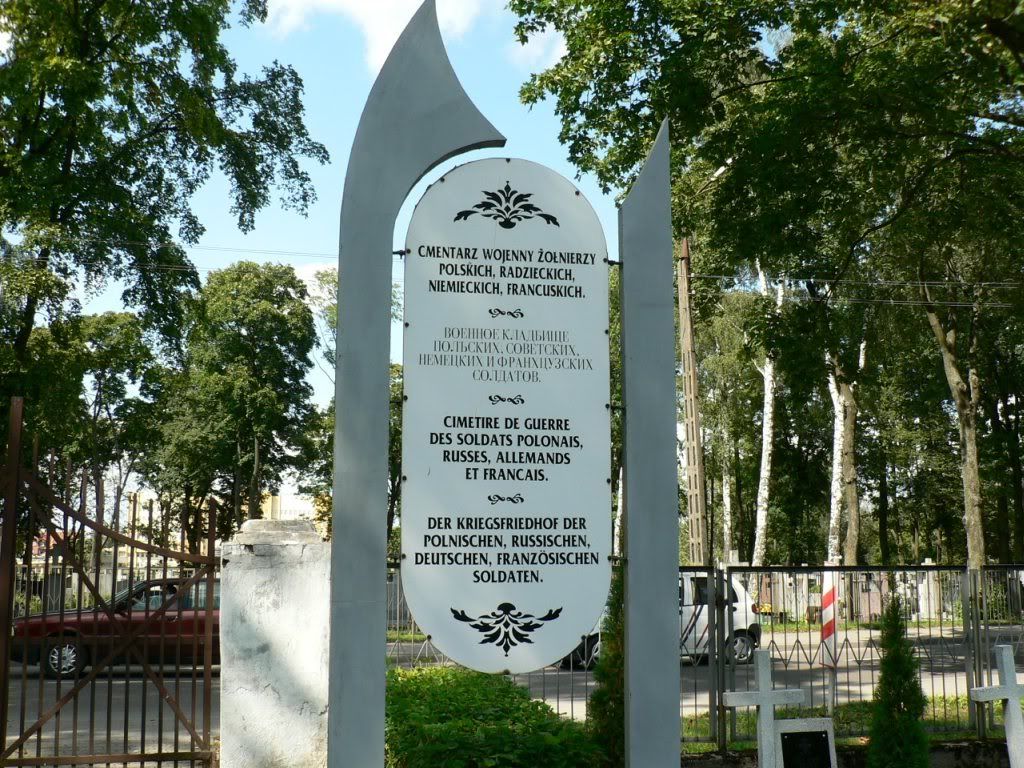
German military monument in the center built in 1921 or 1922. Records on the monument doesn't survived to our days:
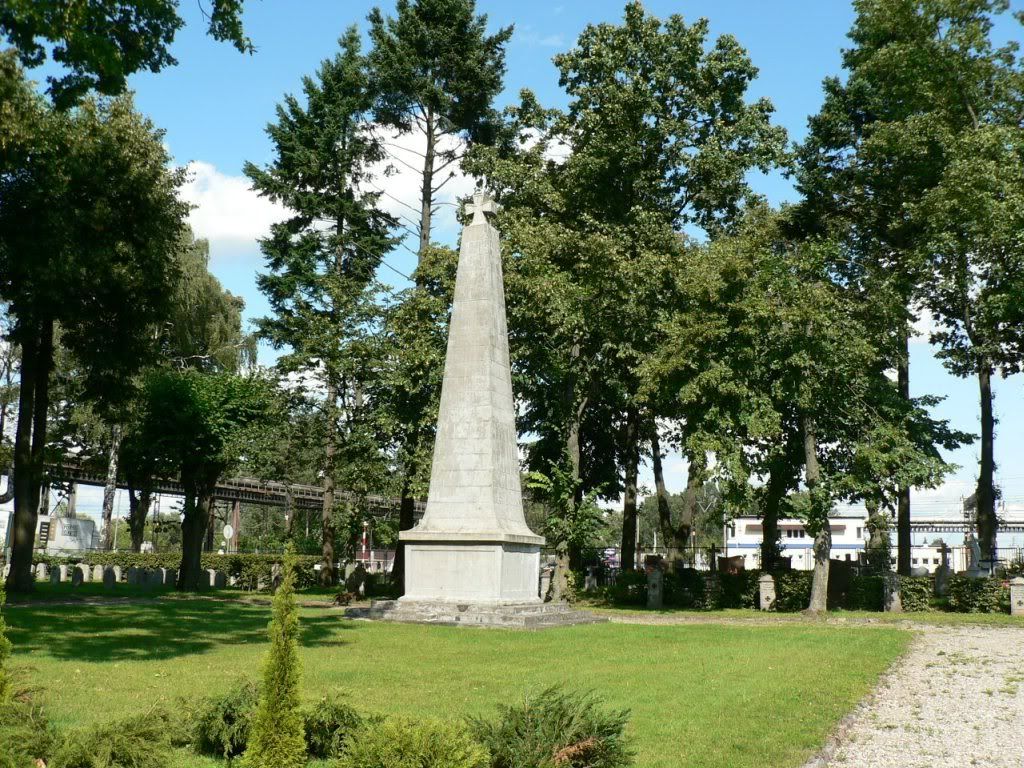
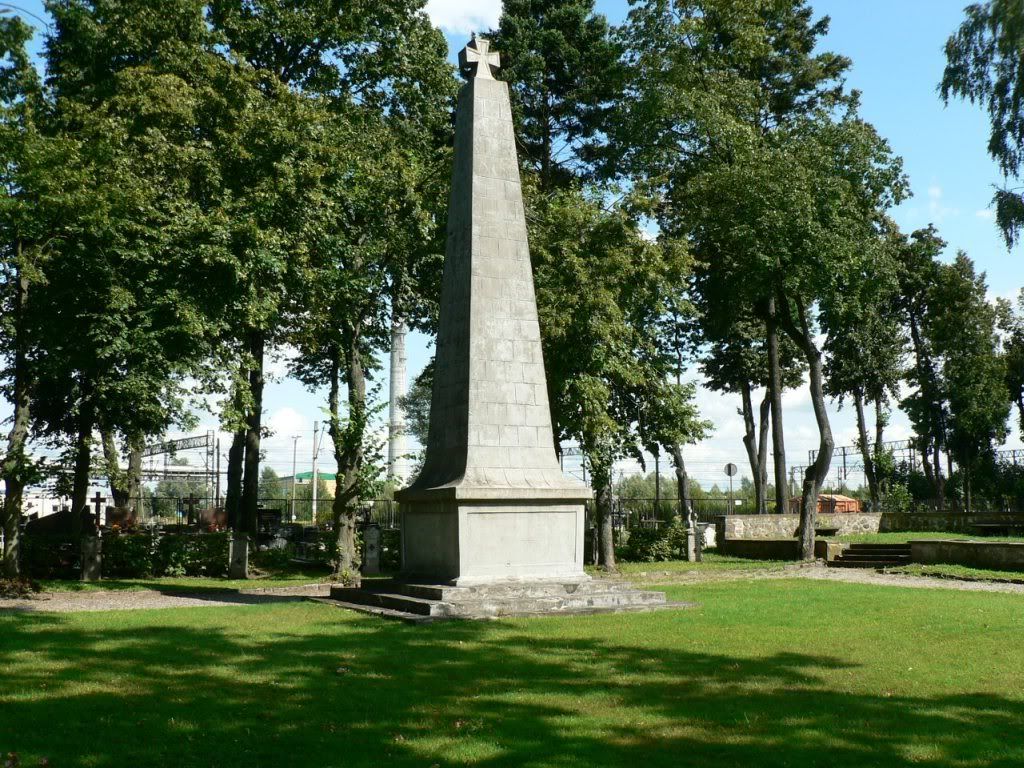
Around the monument are the graves of German soldiers killed in WWI:
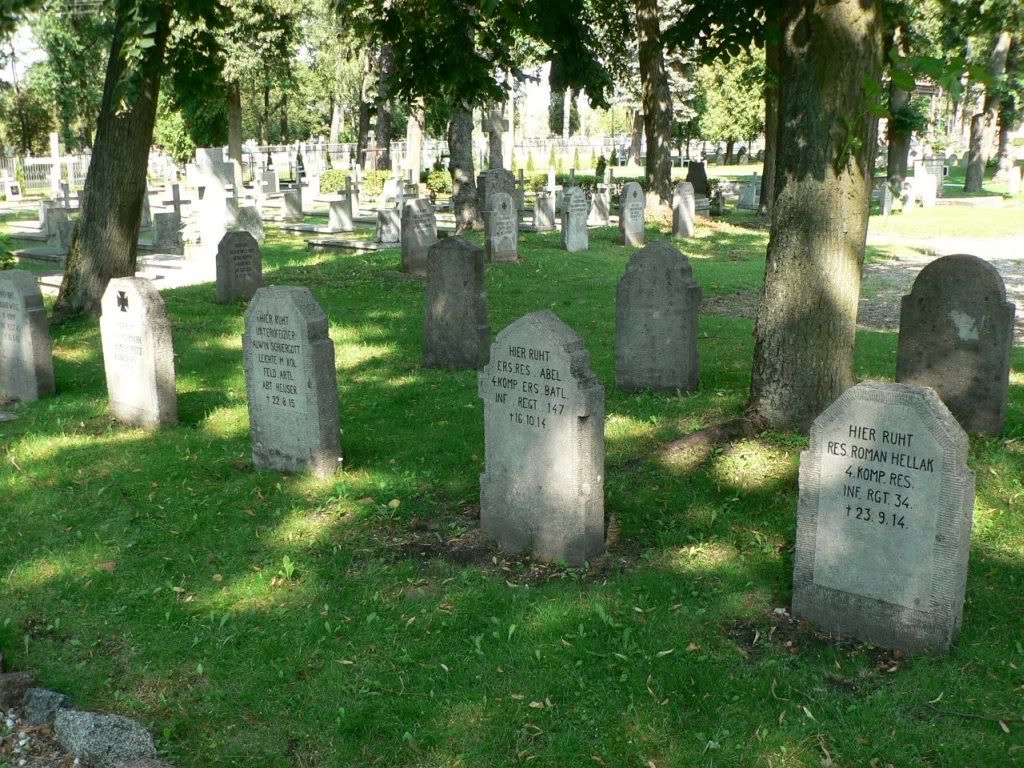
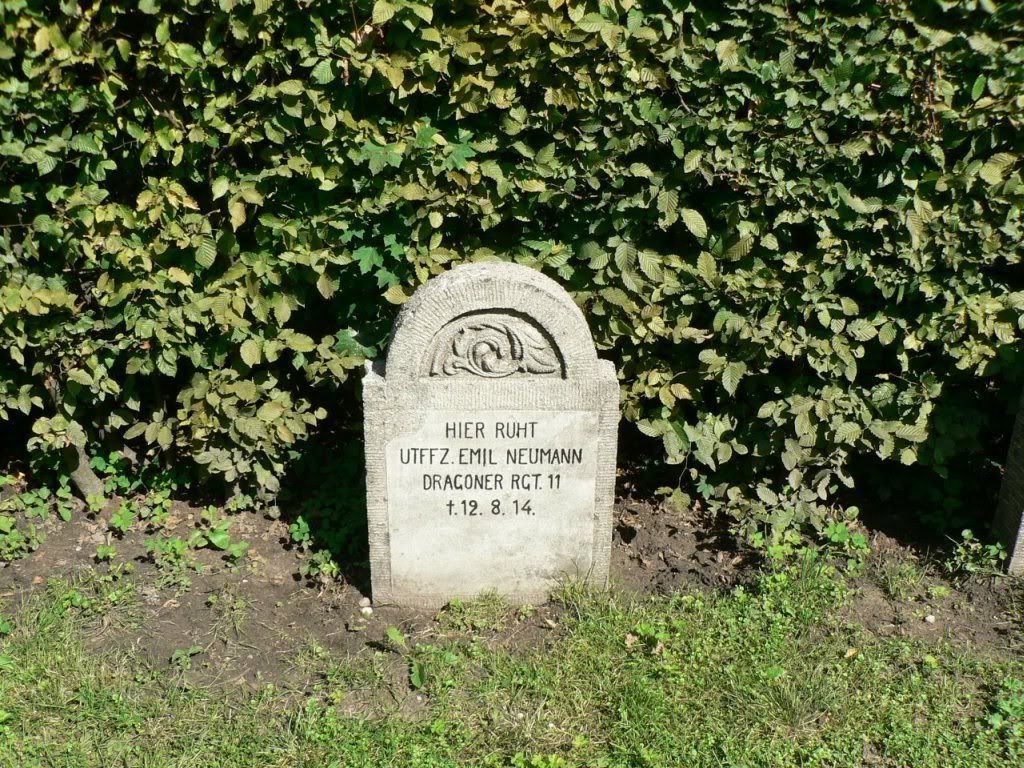
Tomb's monument for officer is slightly bigger:
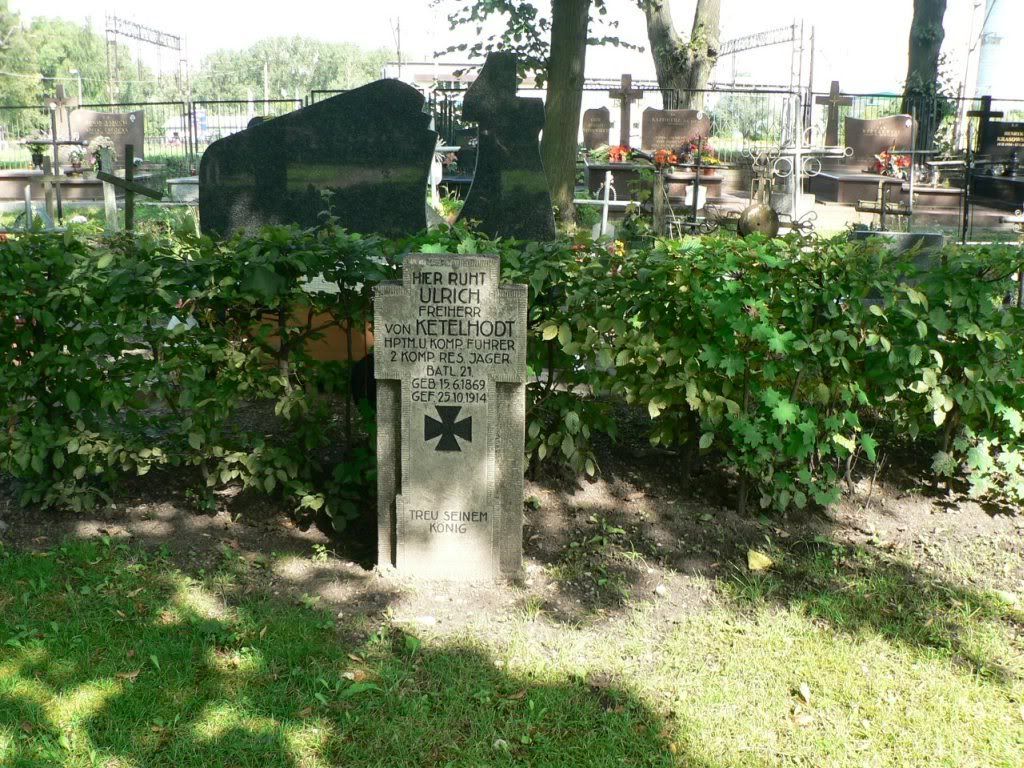
One more memorial table with thanks from town's residents:

I am walking around and see grave with bigger memorial:
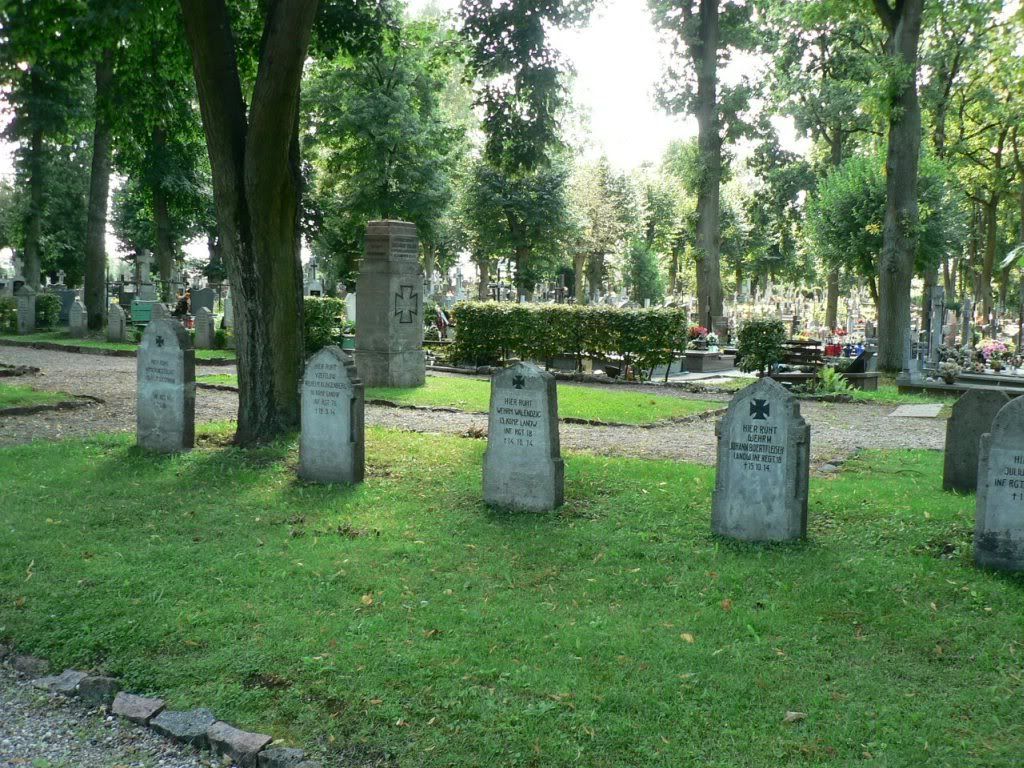
This is the grave of oberleutnant Richard Billig fallen in 1914 (may be hero ? I don' t know):
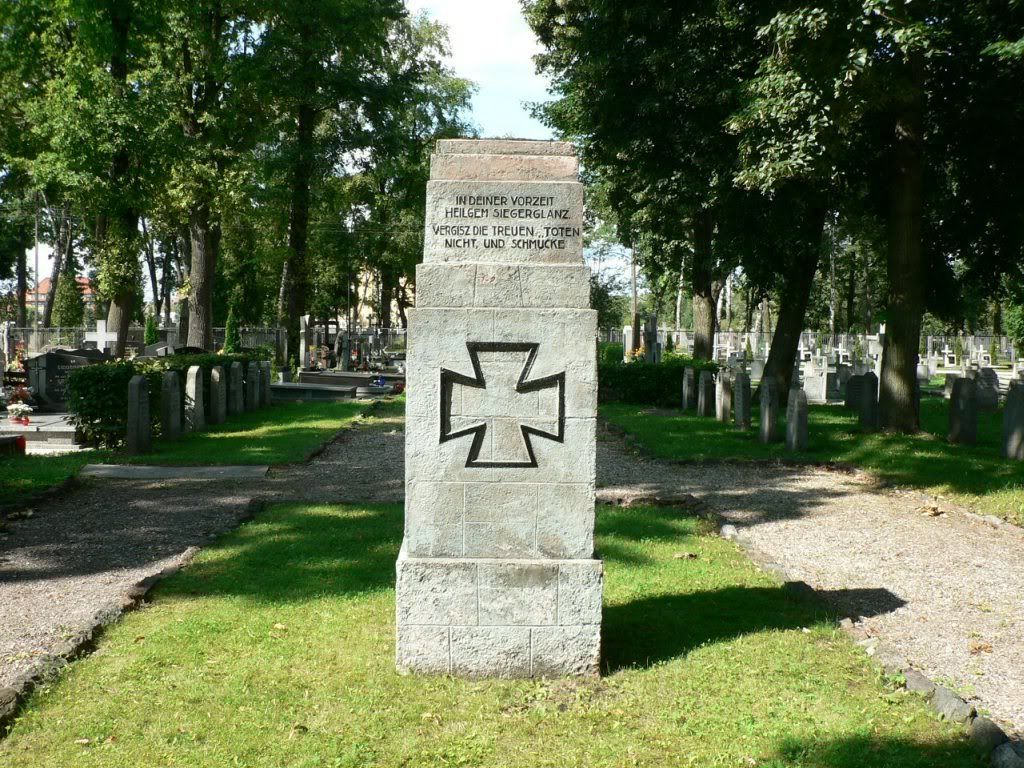
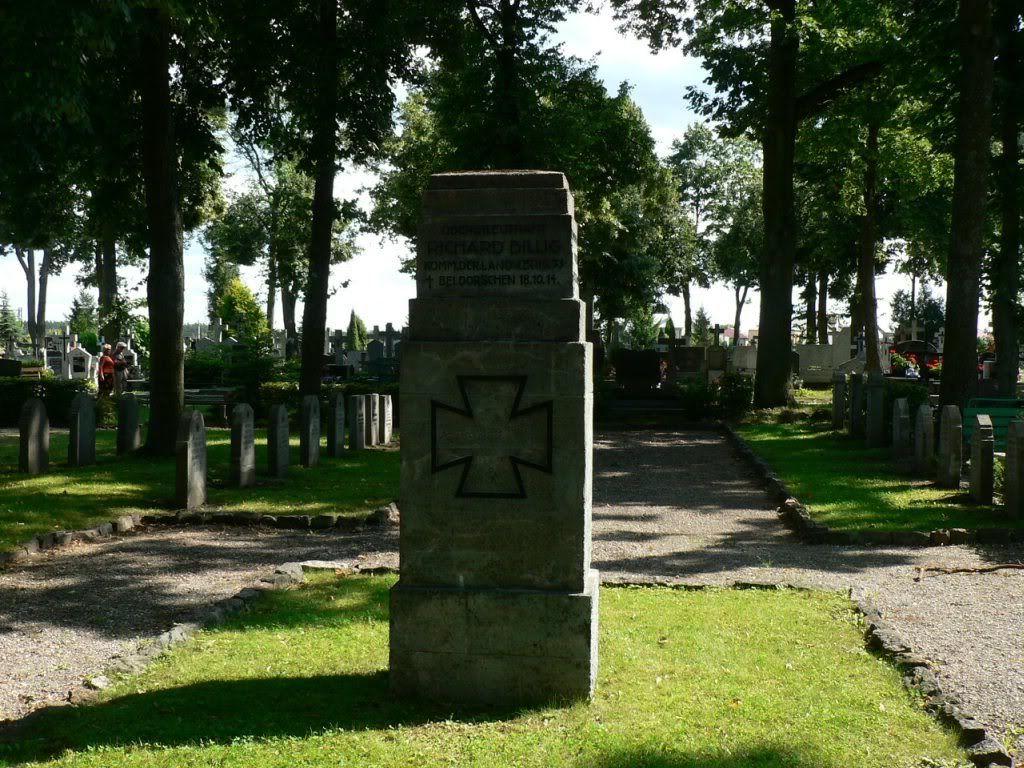
Some offtopic but I will present several graves of servicemen who died after WWI. They are more pompastic. This is major who died in 1925:
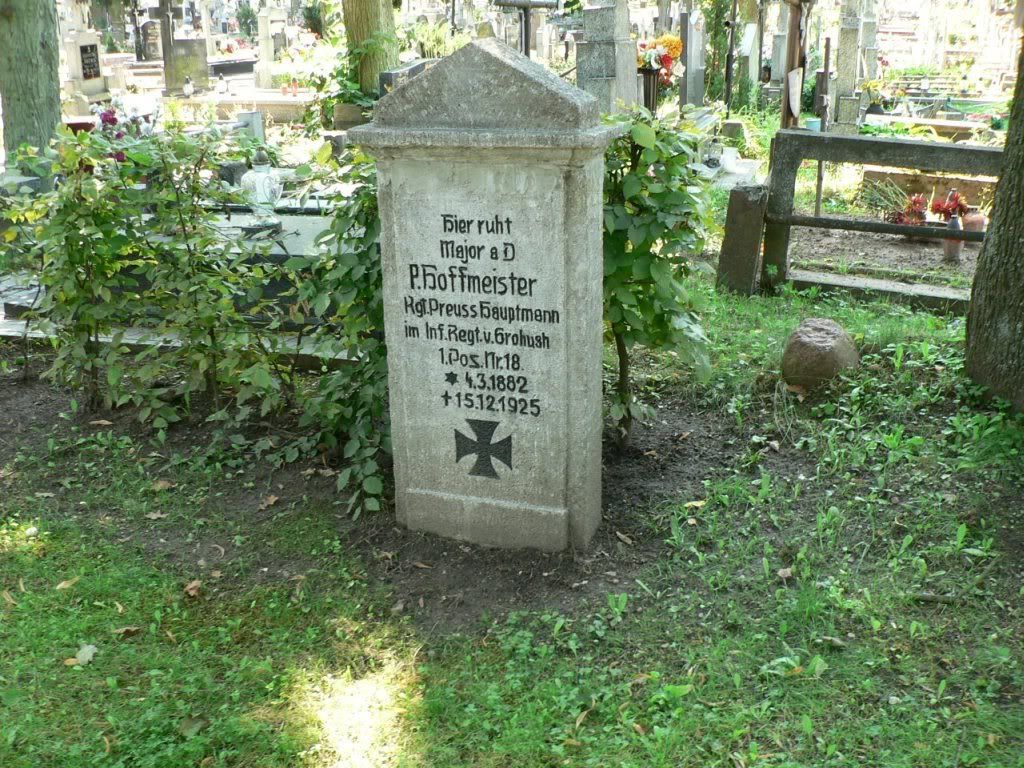
And tombs of three officers who died in 1935 (accident ?):
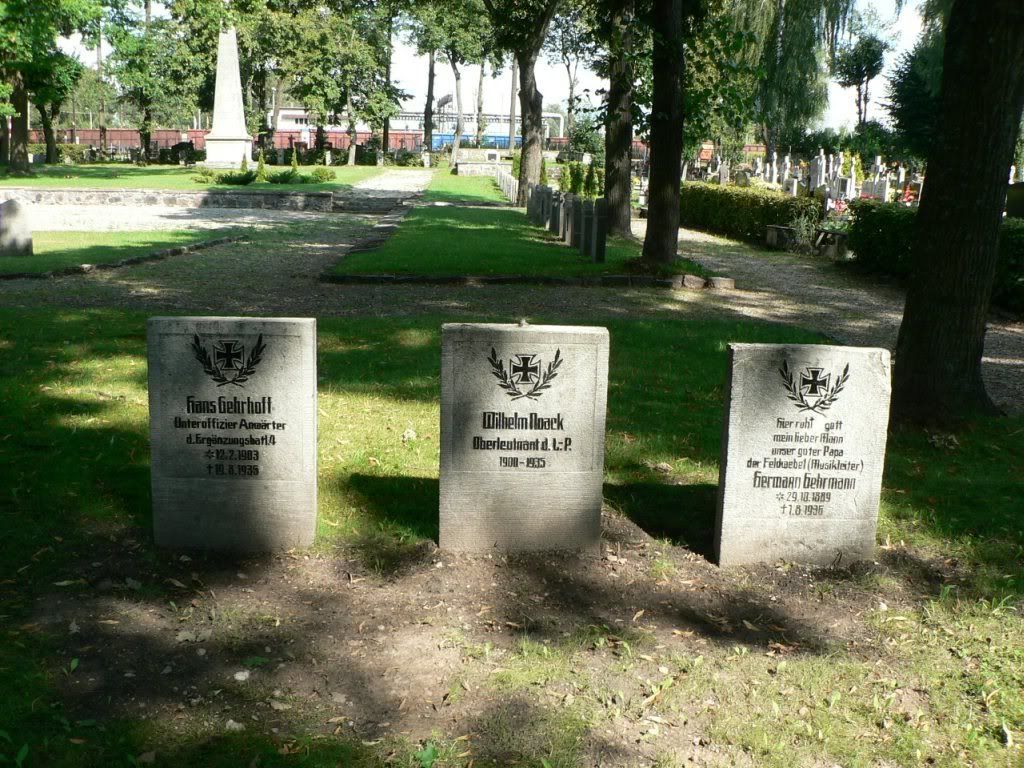
Then I am going back to the center and see Orthodox cross:
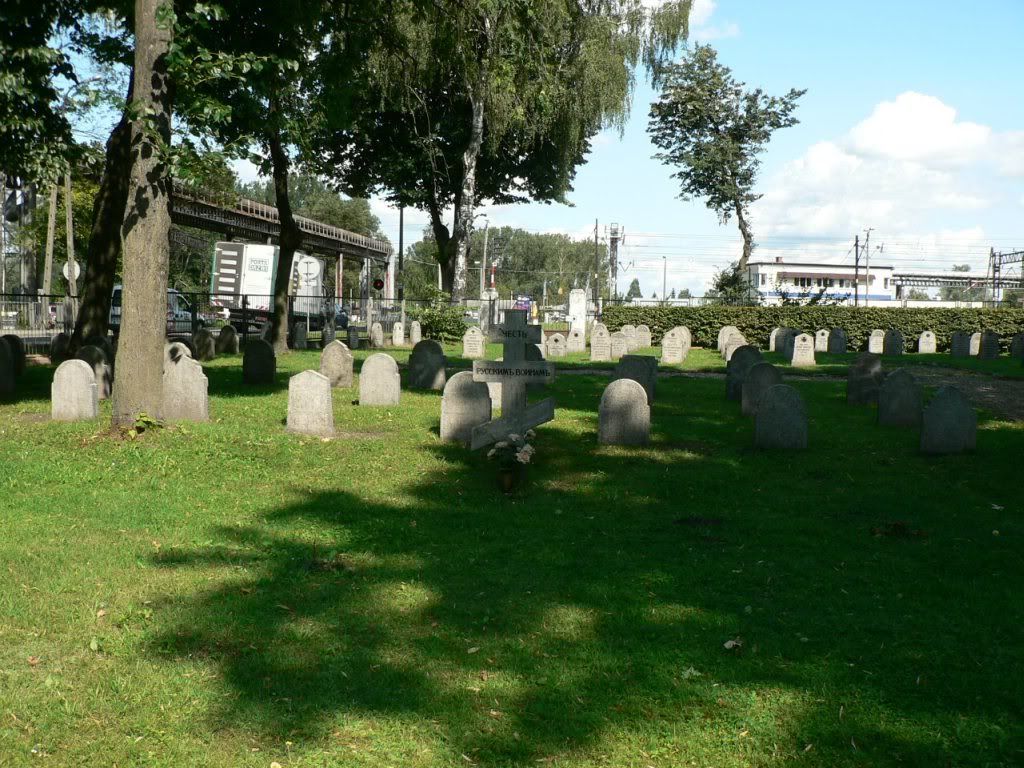
There are the graves of Russian soldiers and monument to their honor:
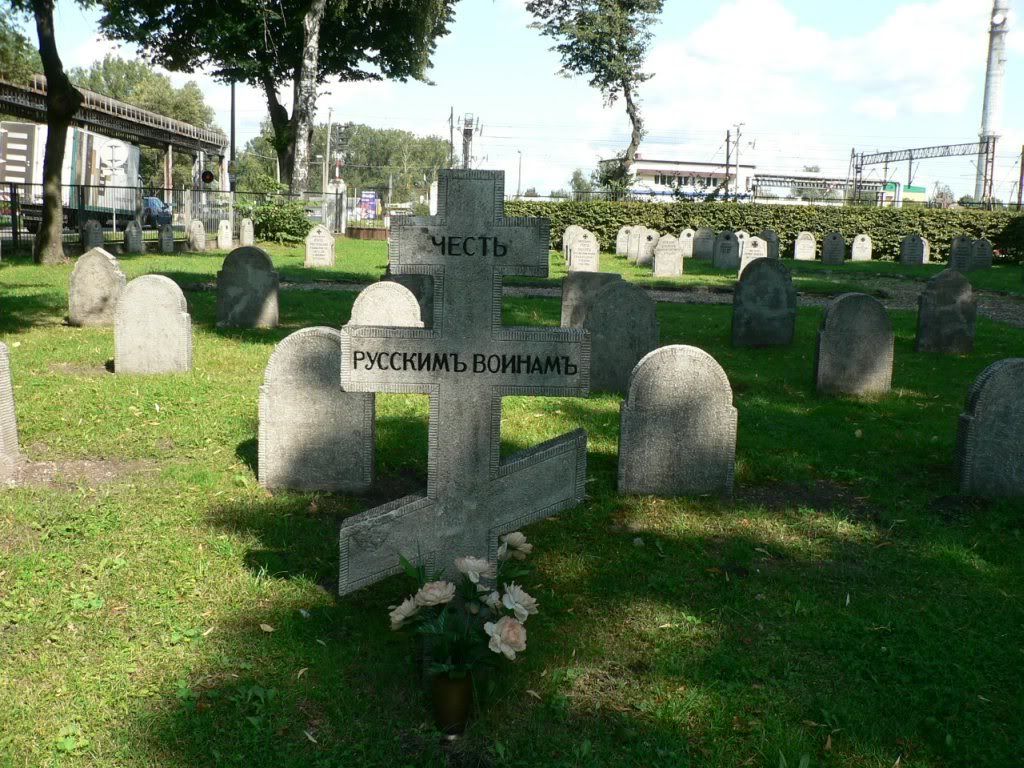
At this cemetery there are also graves of German and Polish soldiers killed in 1939 as well as one grave of French soldier (how he managed to be here ?). May be about these tombs sometime later as well as about the town of Elk and other towns in the area.
Now we are going 25 km to the north, to the another former border town Olecko (also called Margrabowa at that time). If in Elk military cemetery occupies part of currently used cemetery then in Olecko it occupies part of now unused old cemetery (cemetery was used from 1725 (!) to 1945).
General look:
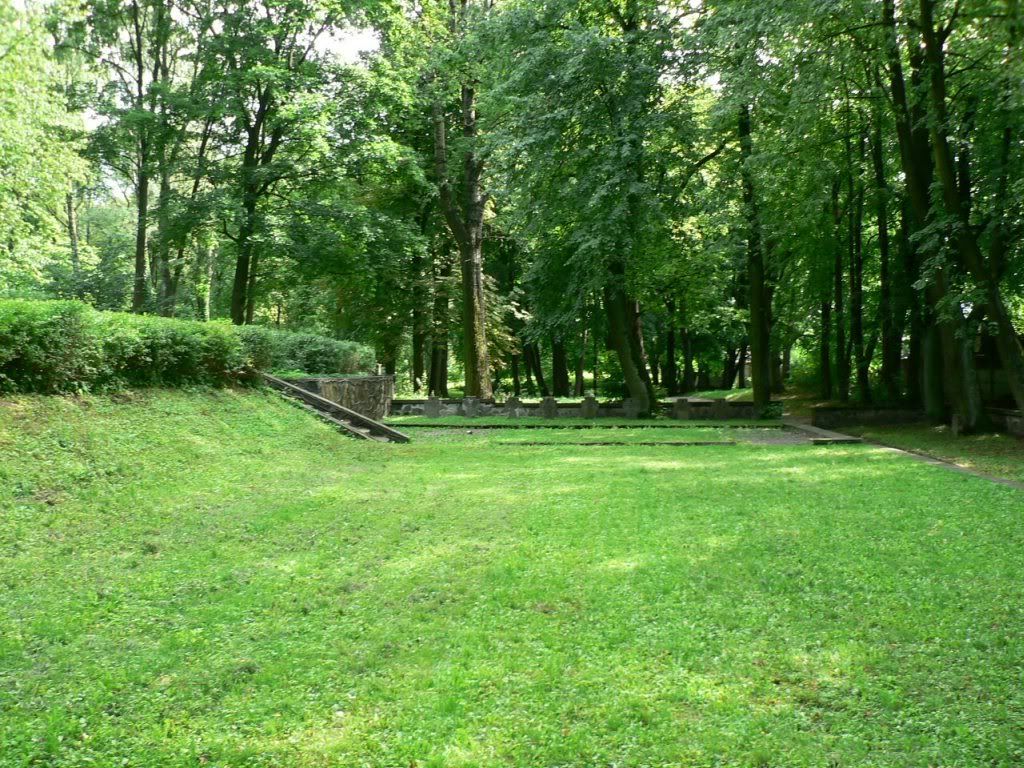
Graves of German soldiers at the sides:
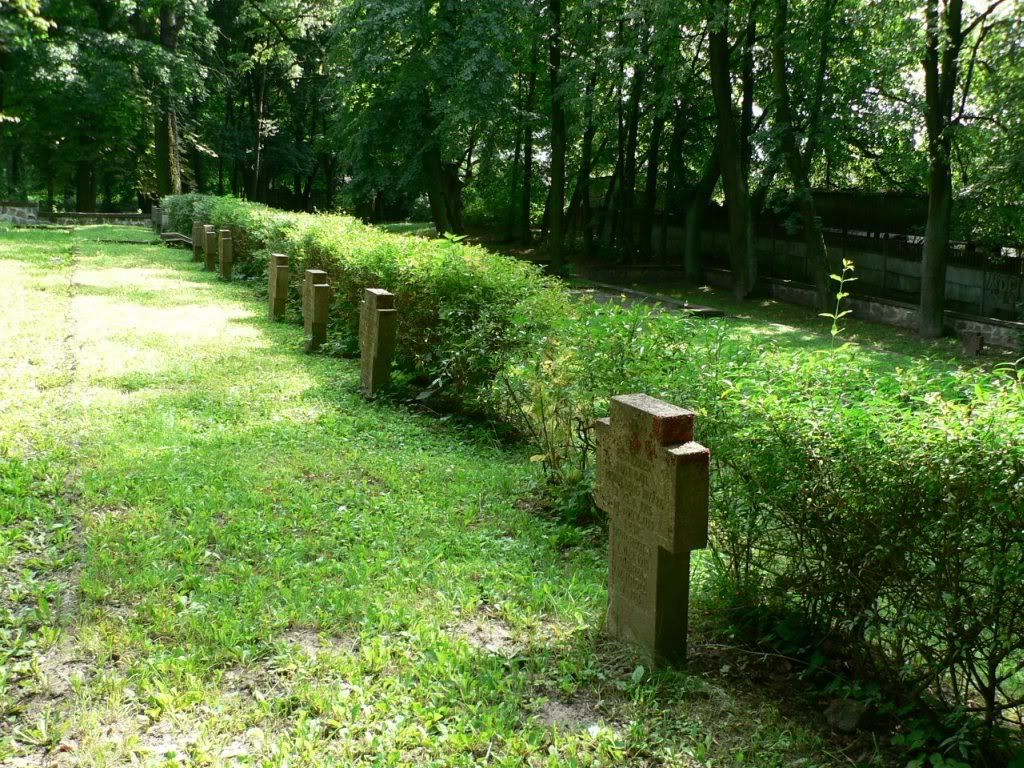
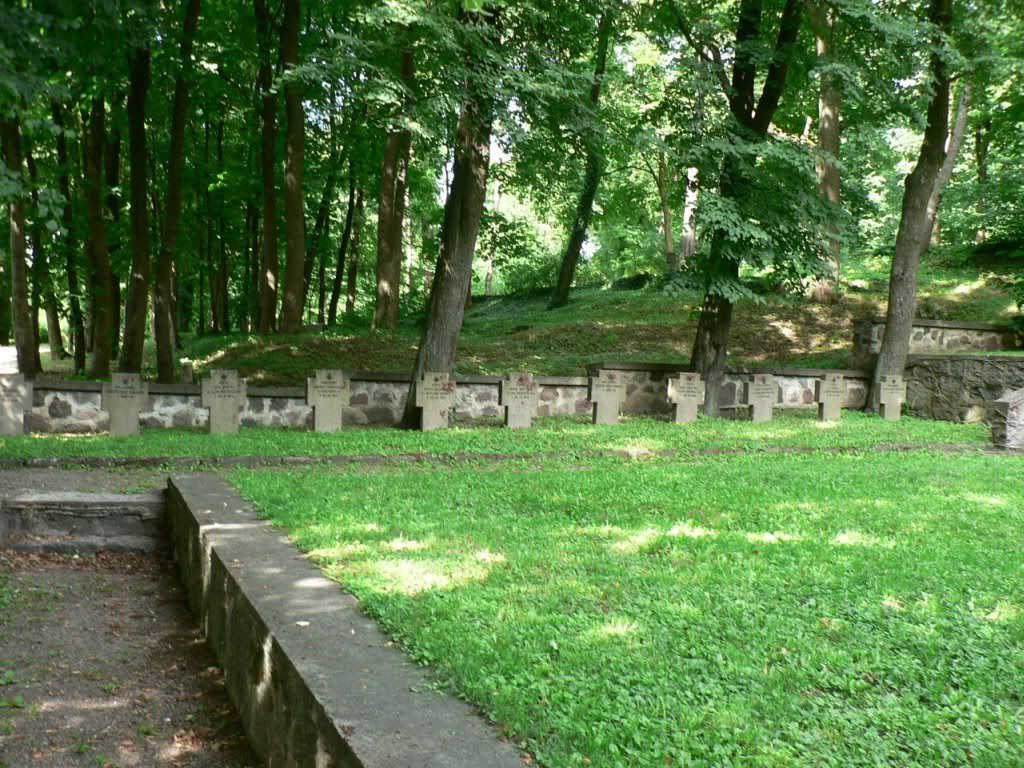
Some of them with clear records, some records are lost:
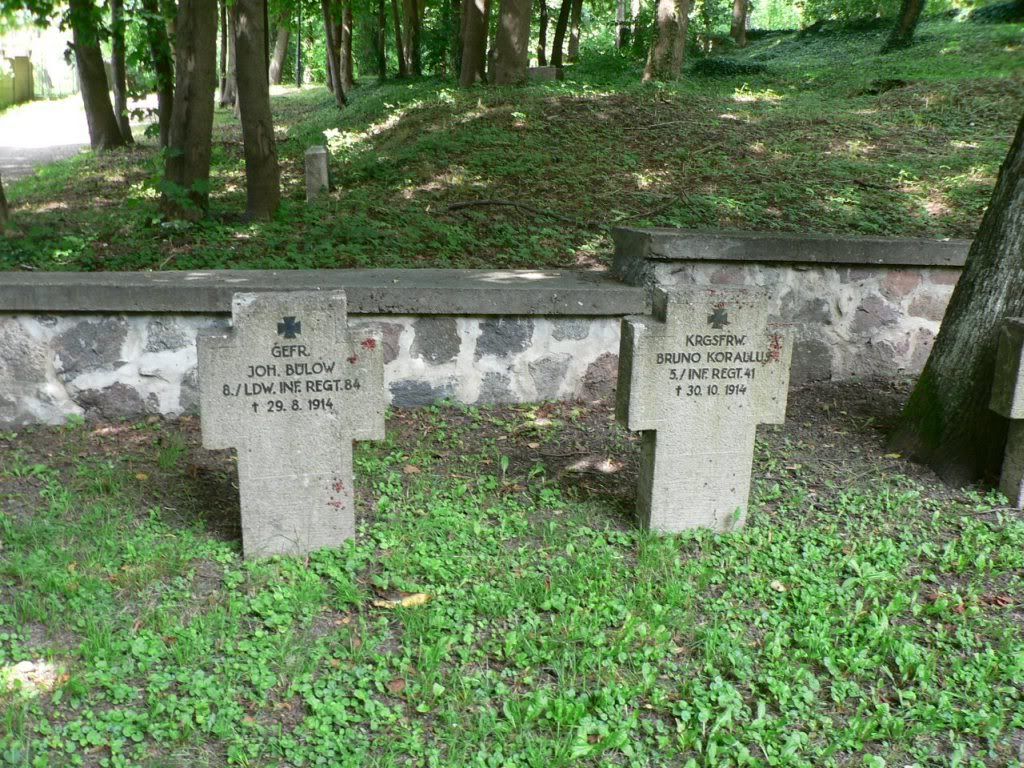
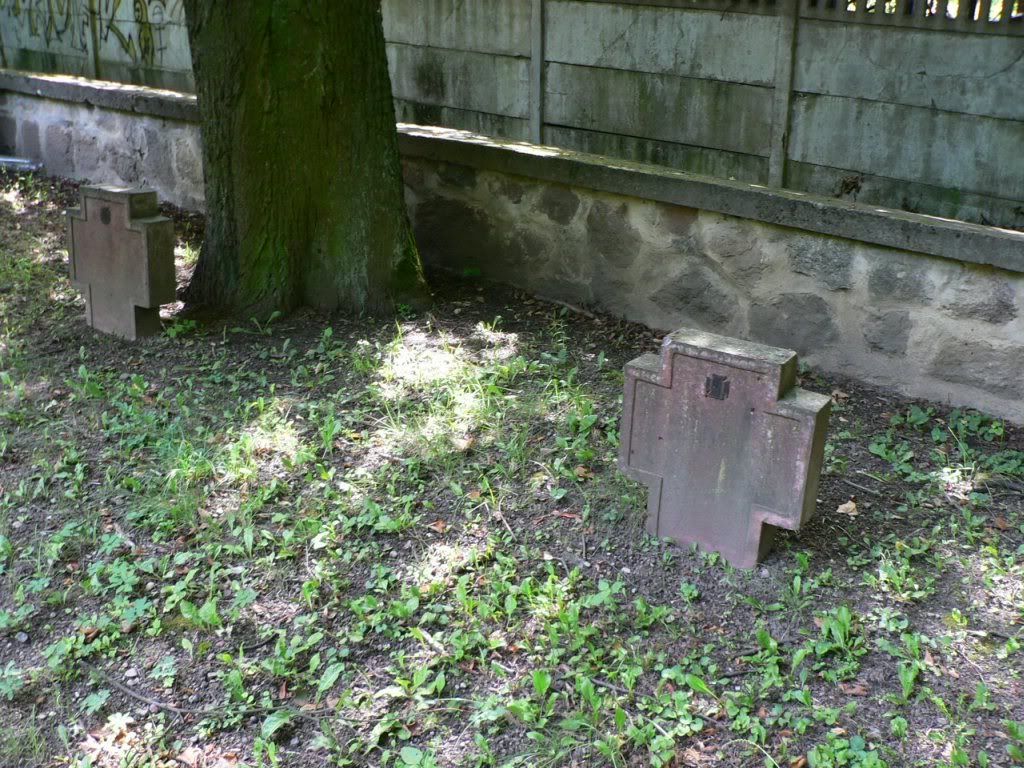
Some graves are shared by several soldiers:
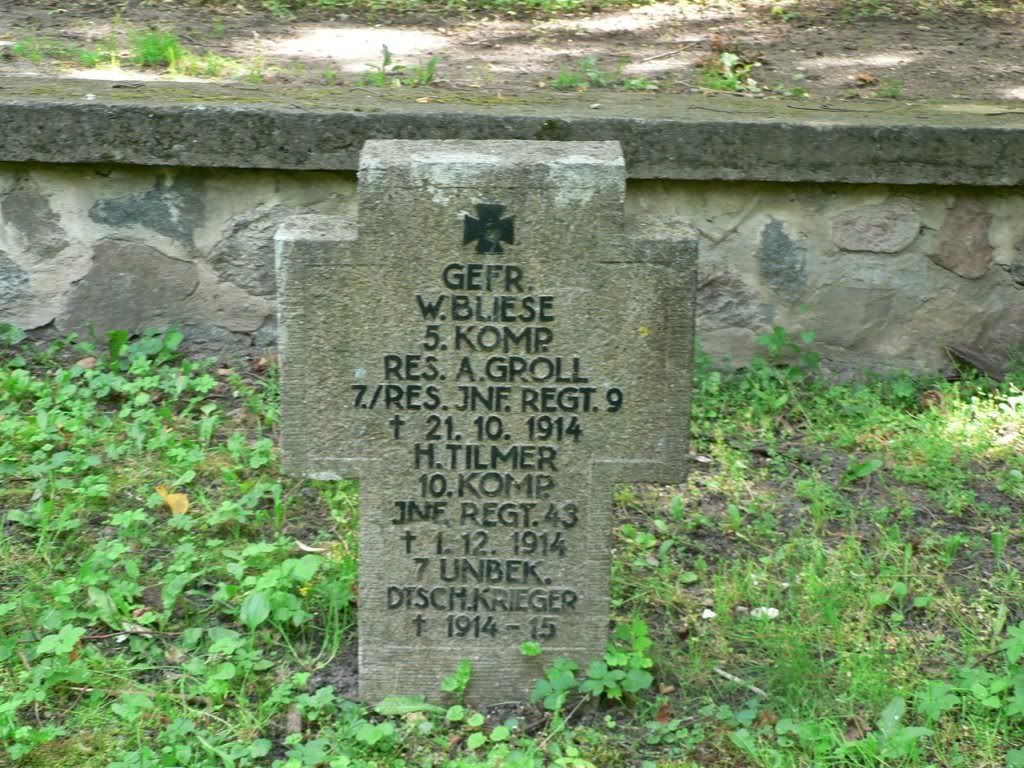
Monument with an unreadable record:
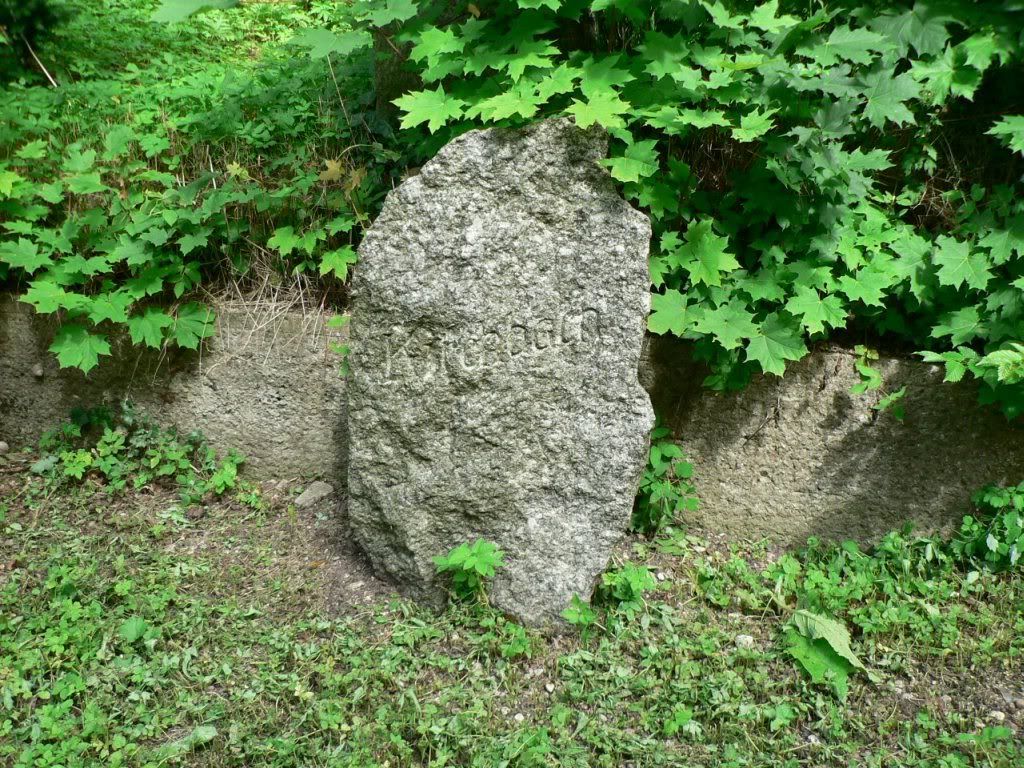
There are several "floors" :
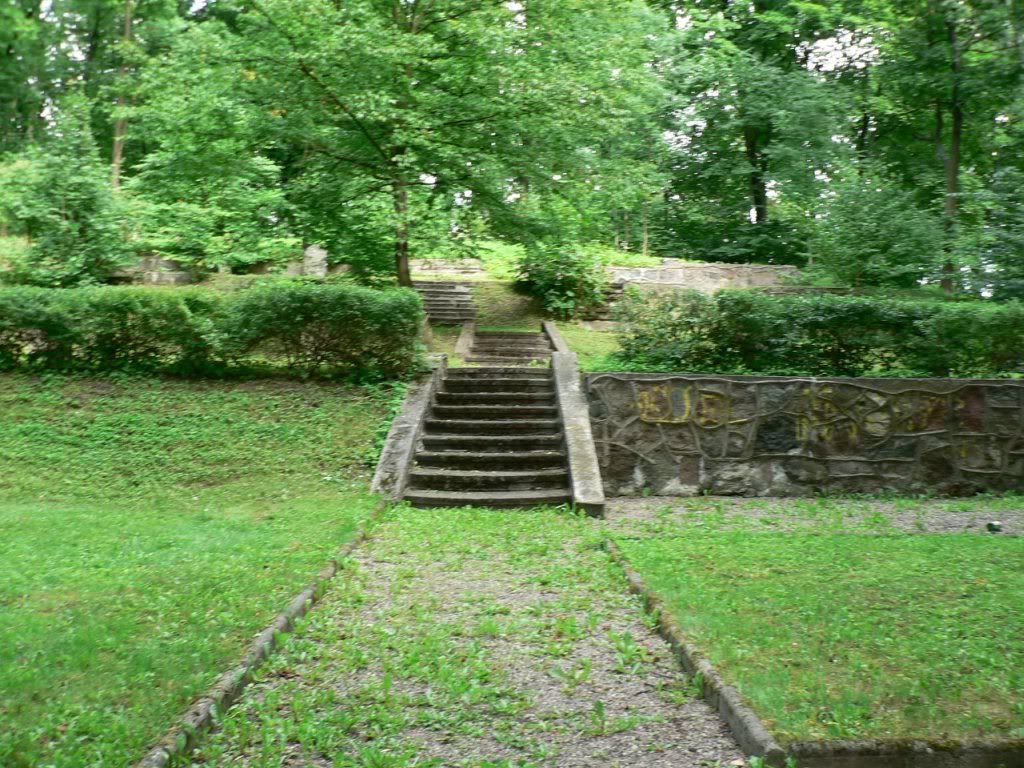
And using stairs we found graves of enemy army soldiers with symbolic monument in the center:
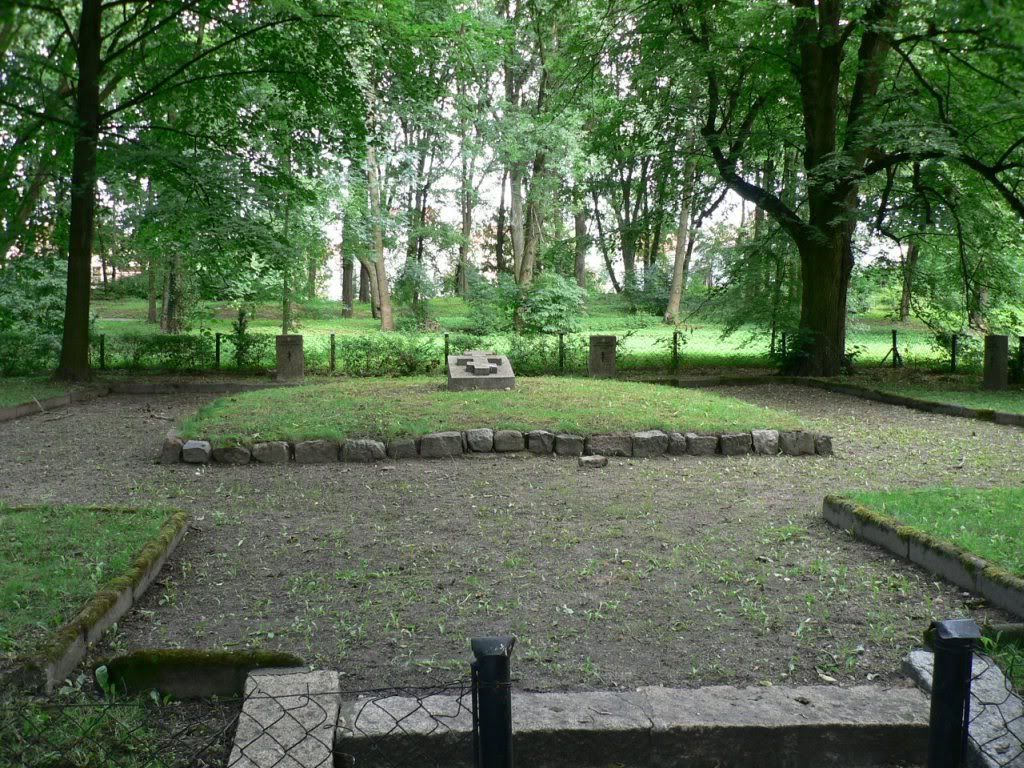
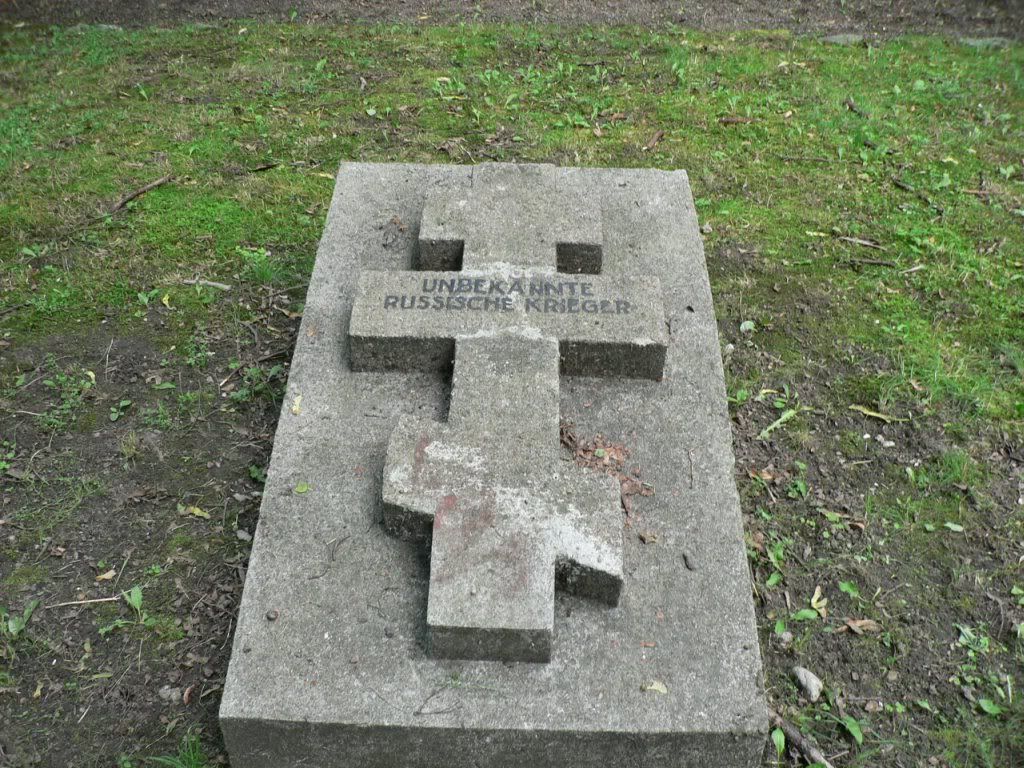
Around this grave of unknown Russian soldier graves of other mostly unknown Russian soldiers:
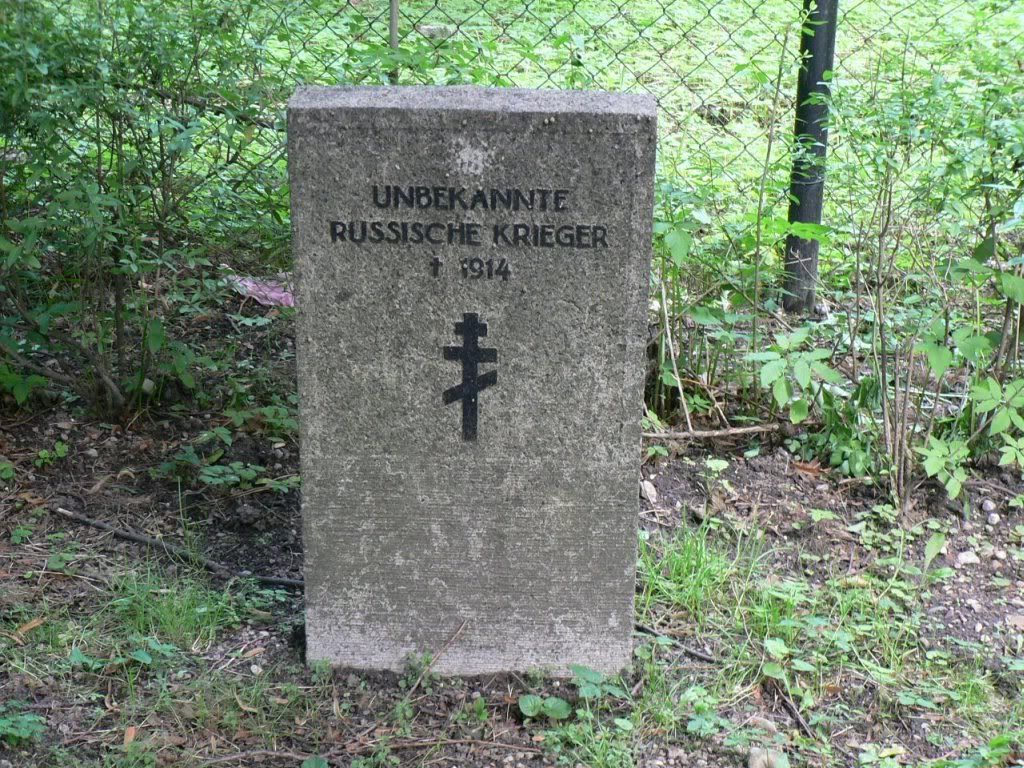
As well many graves are shared by several soldiers:
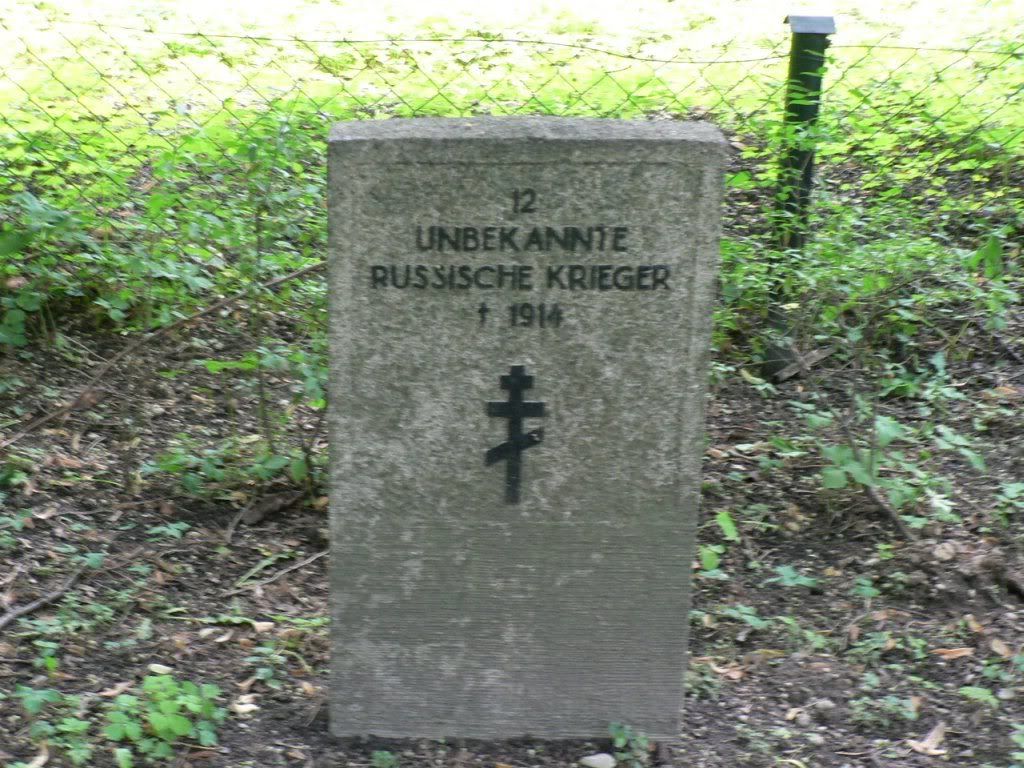
Further to the north is village Kowale - Oleckie. In the center of the village there is also cemetery from WWI but road workers did maintenace works in the village and I wasn't allowed to stop for a longer time here. So I did rapidly several photos.
Entrance to the cemetery:
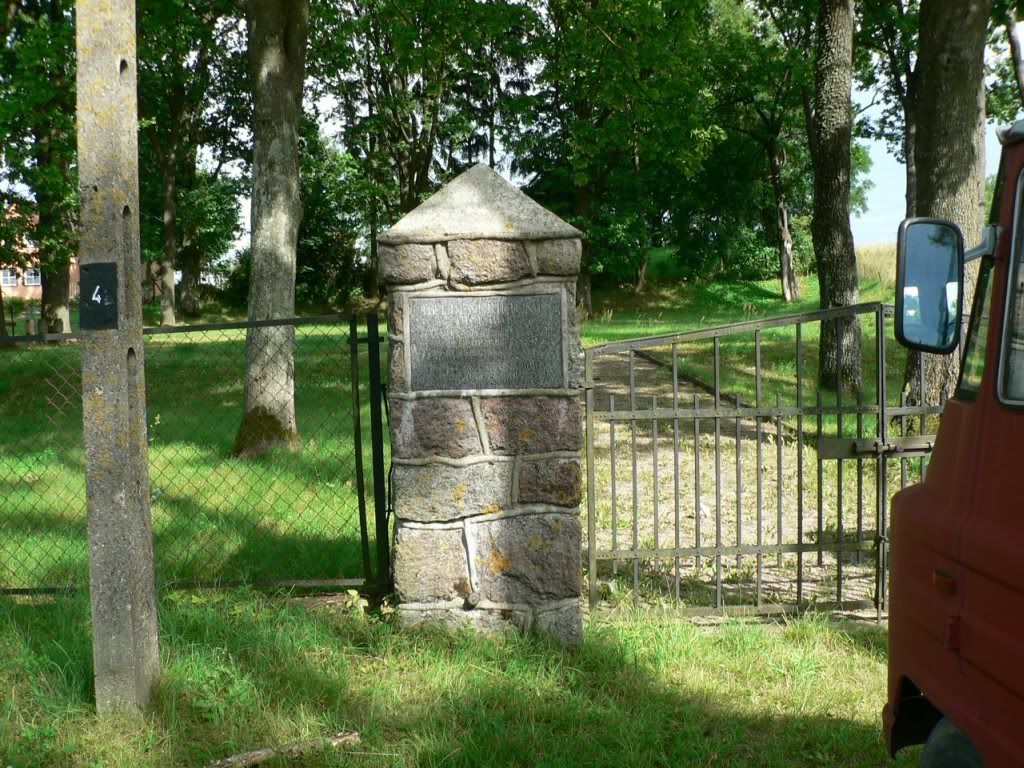
Remaining German monument in the center:
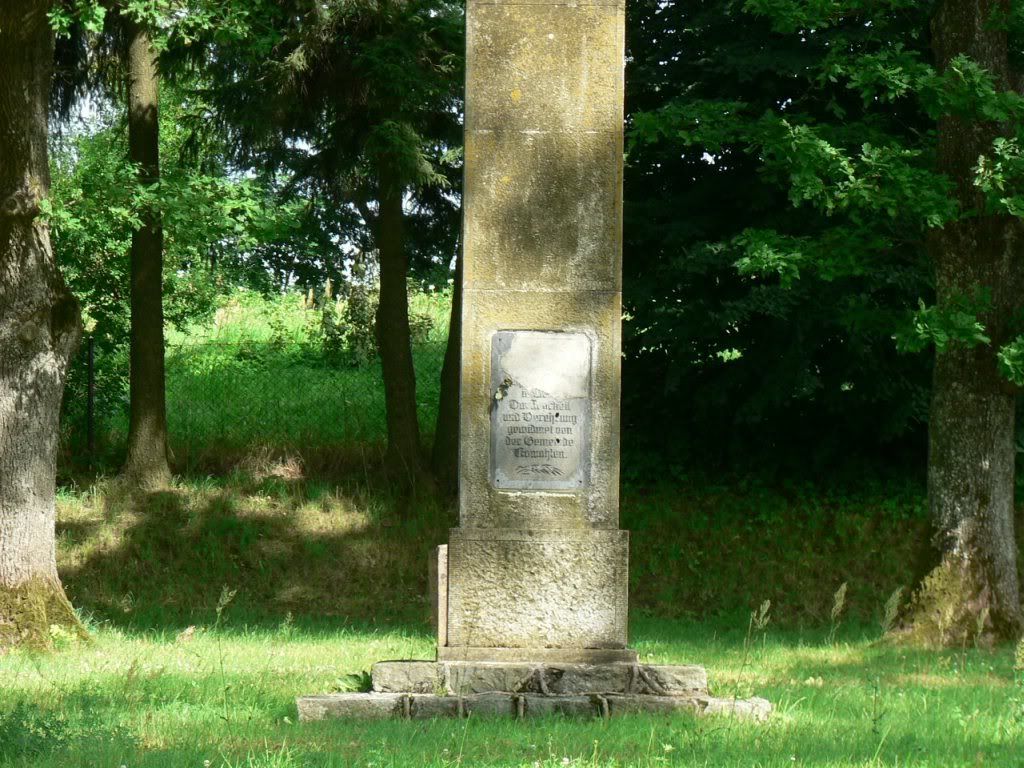
German graves at the left and right sides of the monument:
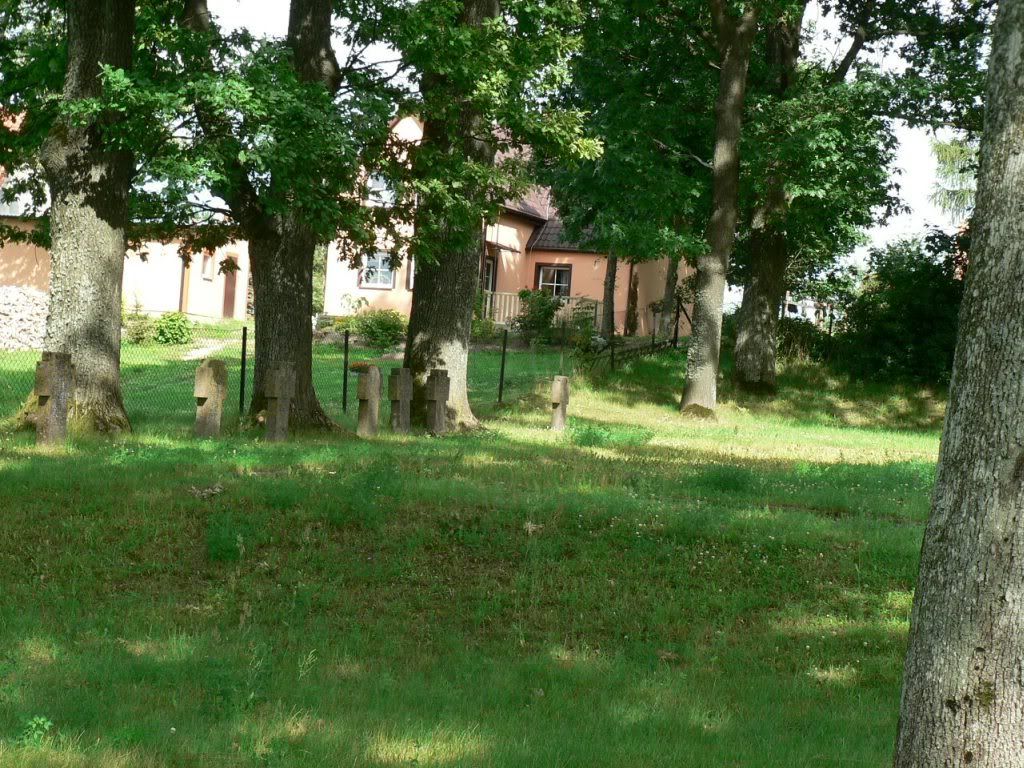
Russian graves behind the monument:
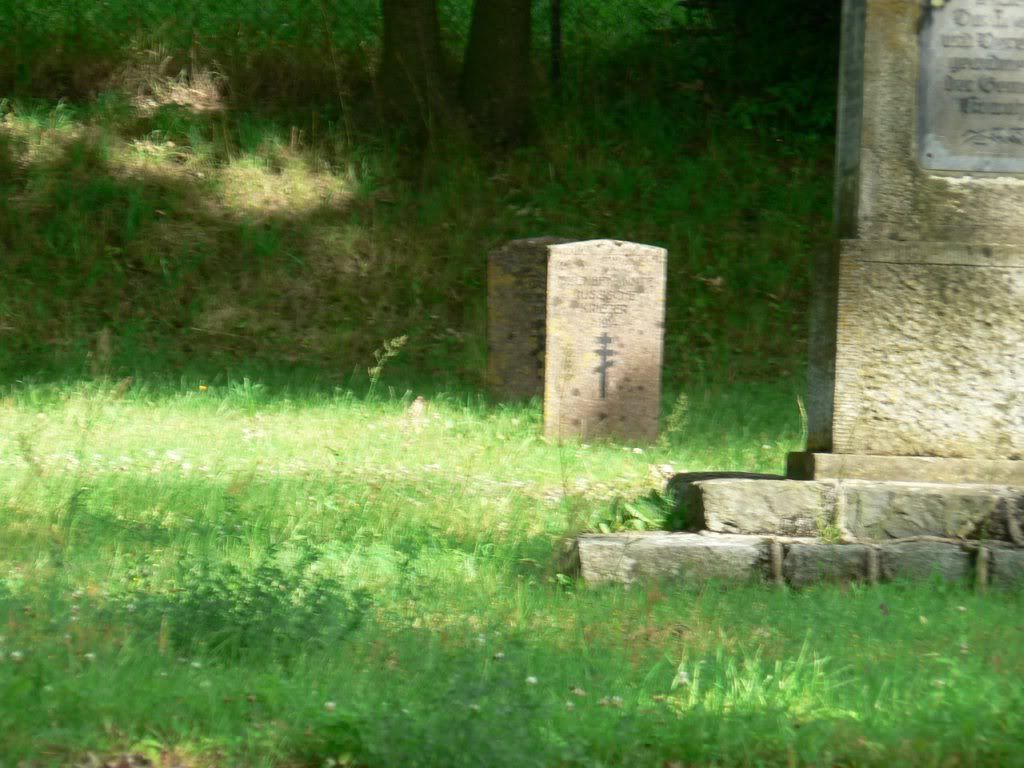
Next cemetery is the town Goldap which is very close to the Russia's Kaliningrad region. Military cemetery from WWI are at the outskirts in the not well-to-do area.
Table near the entrance:
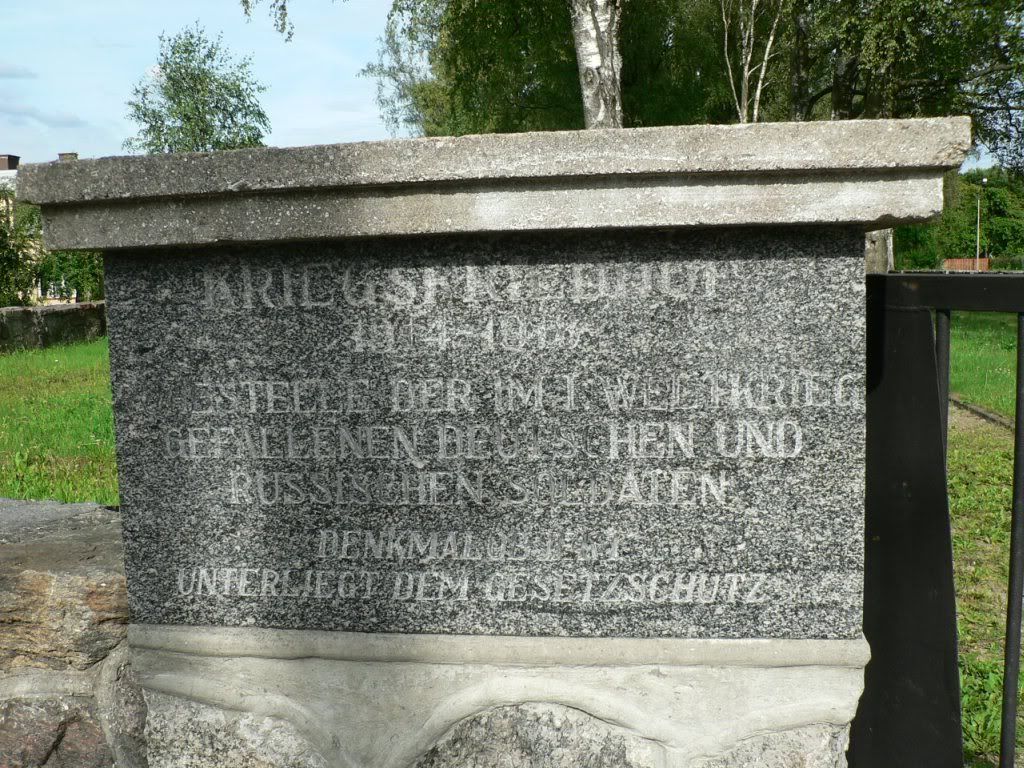
General view of the cemetery:
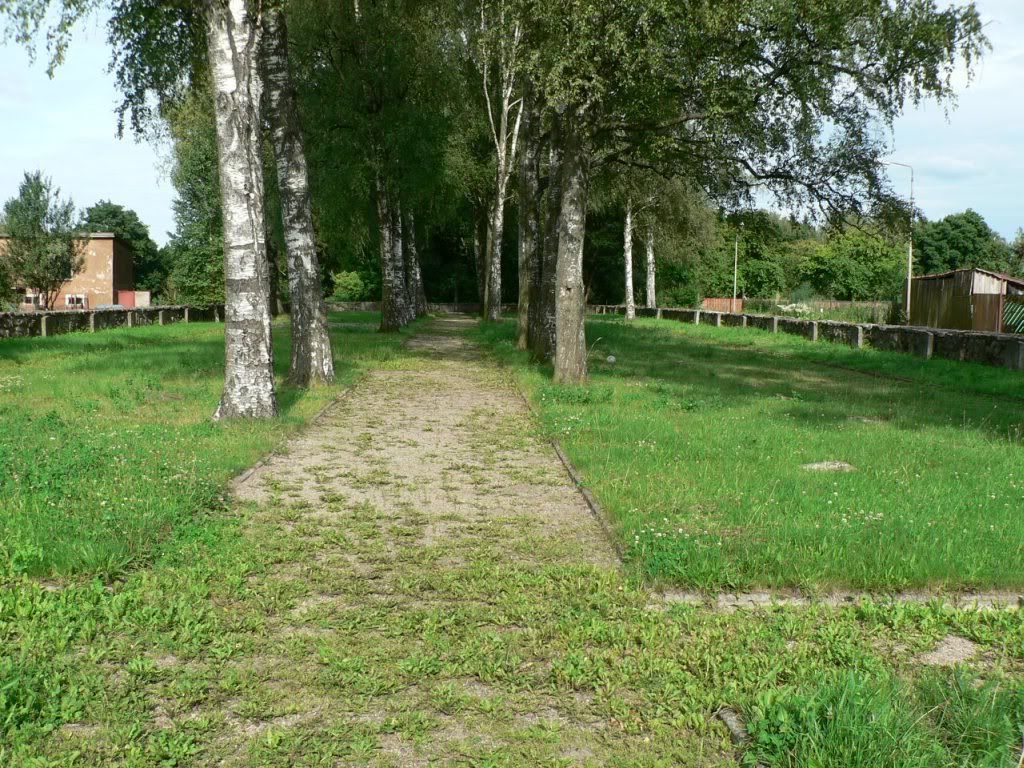
Here there are no different areas for different armies. You are going and see that one grave is German while next may be Russian:
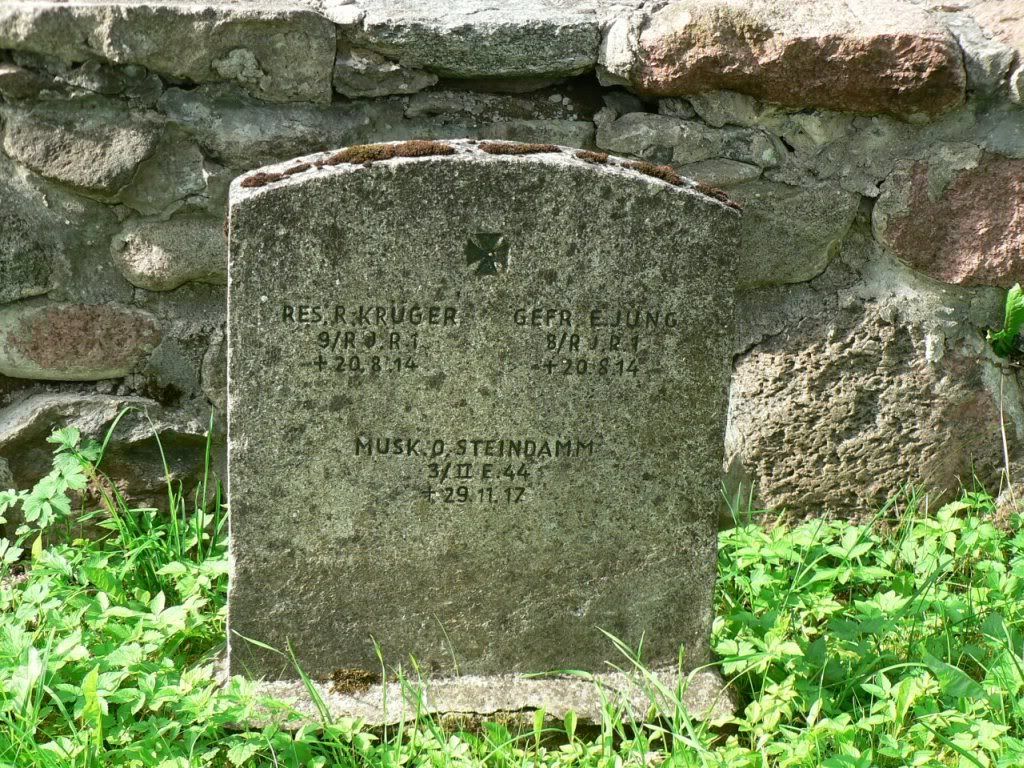
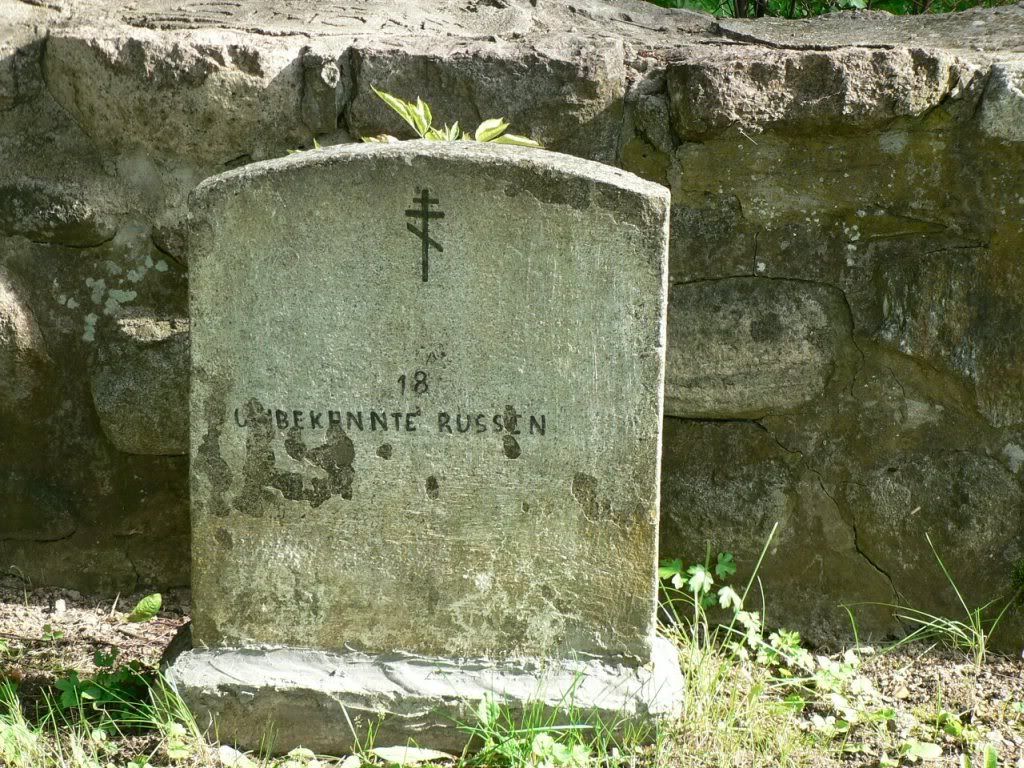
Some German tombs are also unknown:
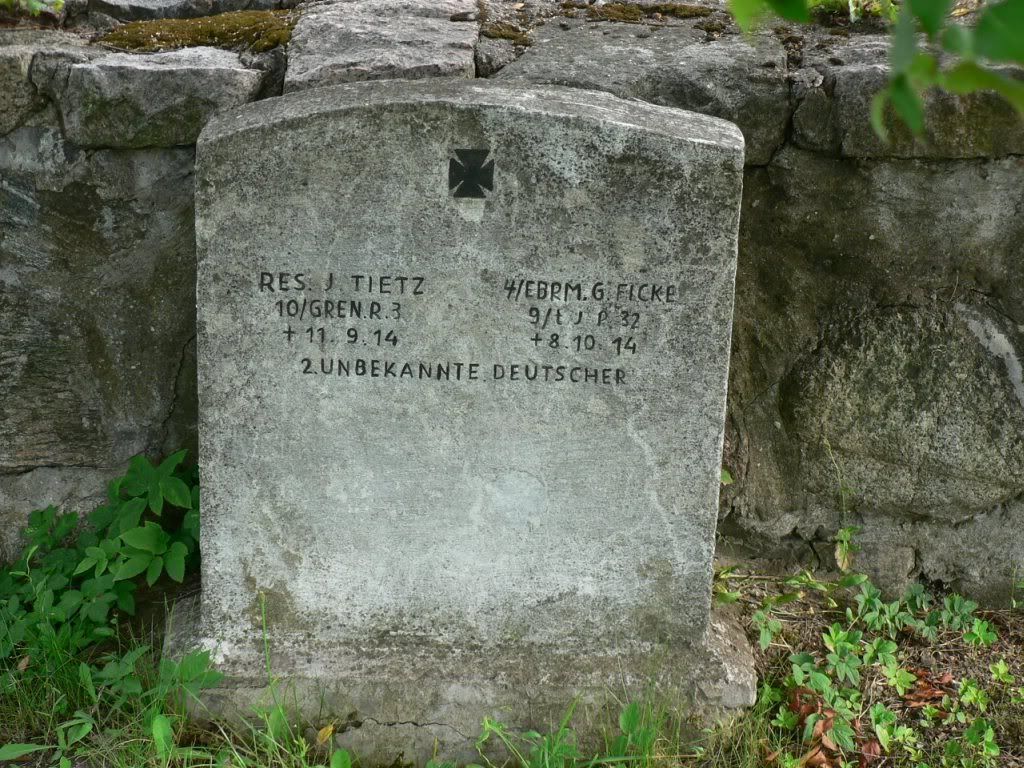
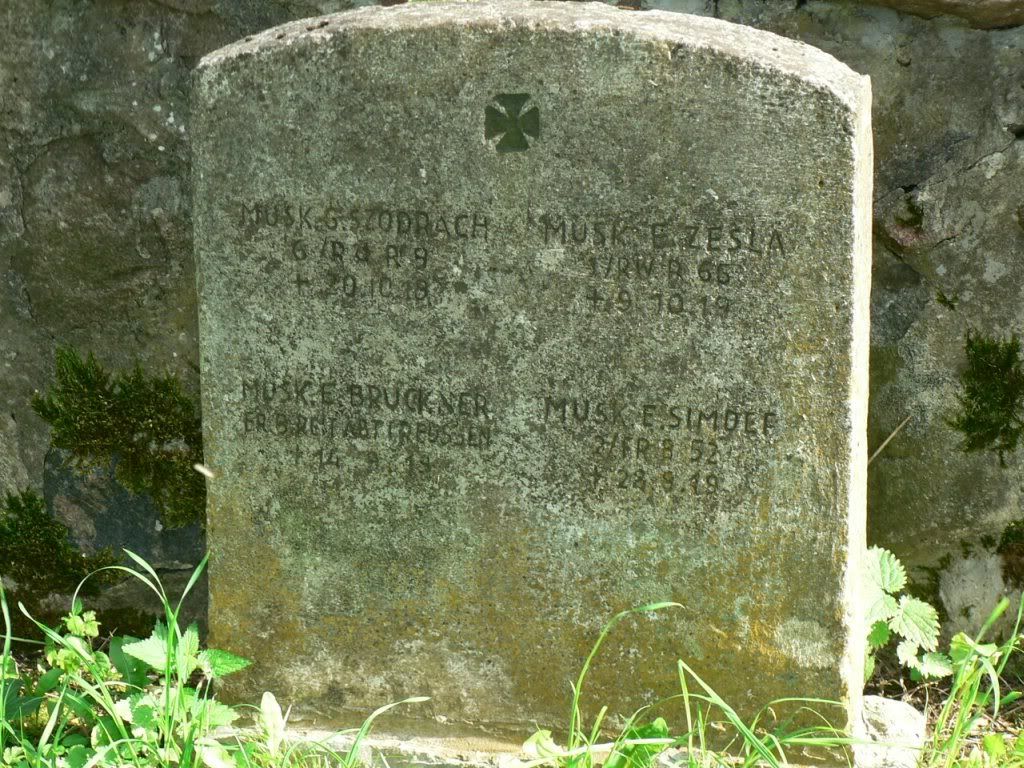
Several identified Russian graves but they died at the last days of the war (illnesses ? wounds ?):
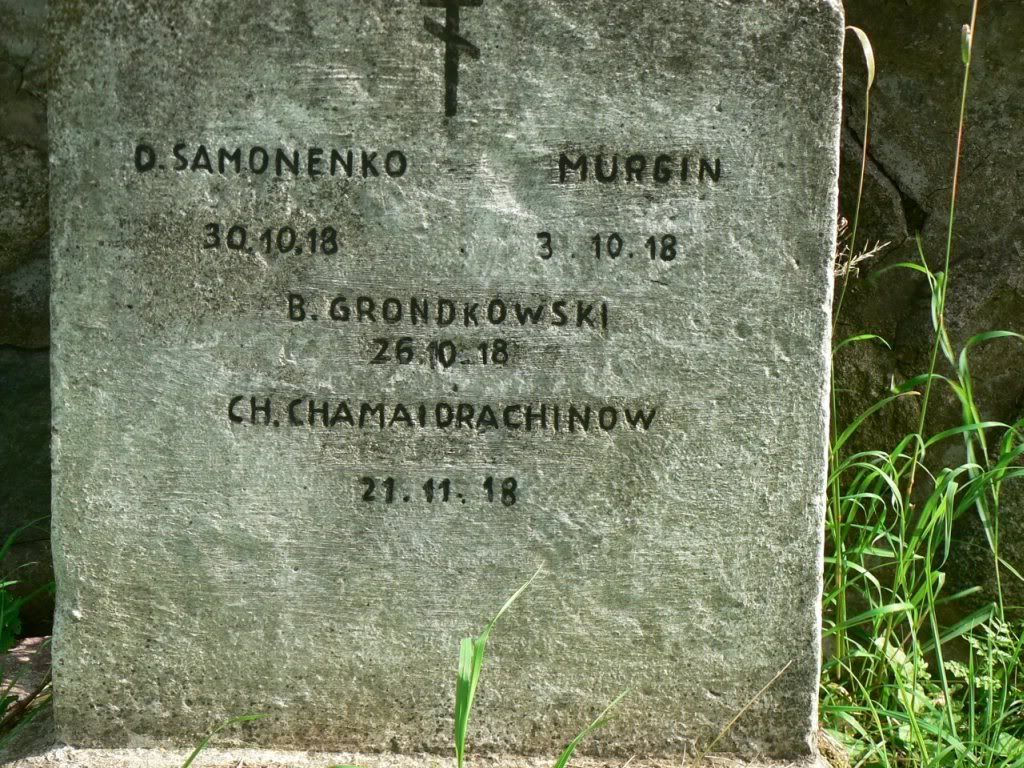
Unknown Russian officer (officers typically don't share the grave):
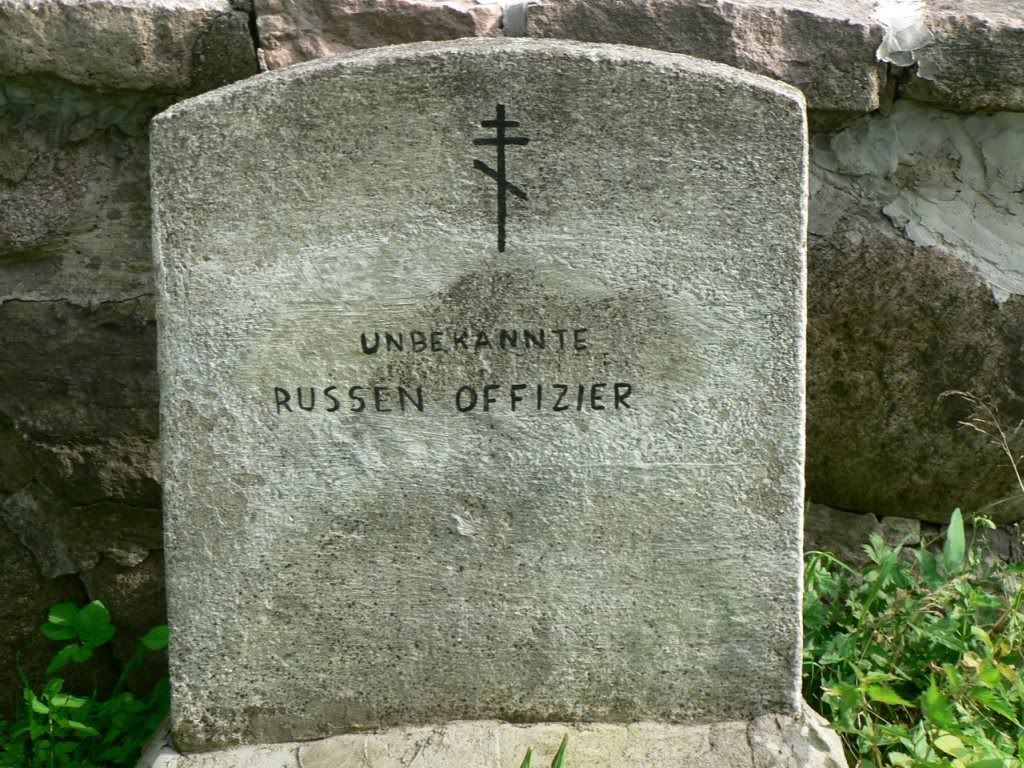
I was unable to read records on these graves:

And finally last and my favorite cemetery in this report. It is cemetery in the village of Dubeninki built just after the WWI (in 1920-1921).
Entrance to the cemetery:
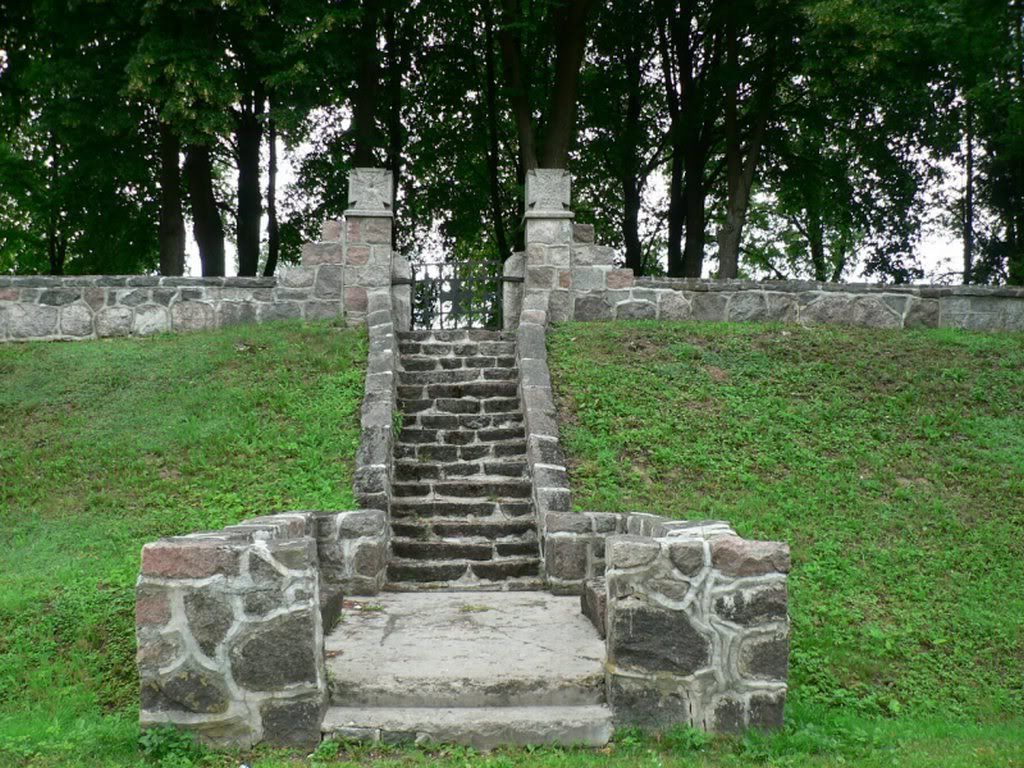
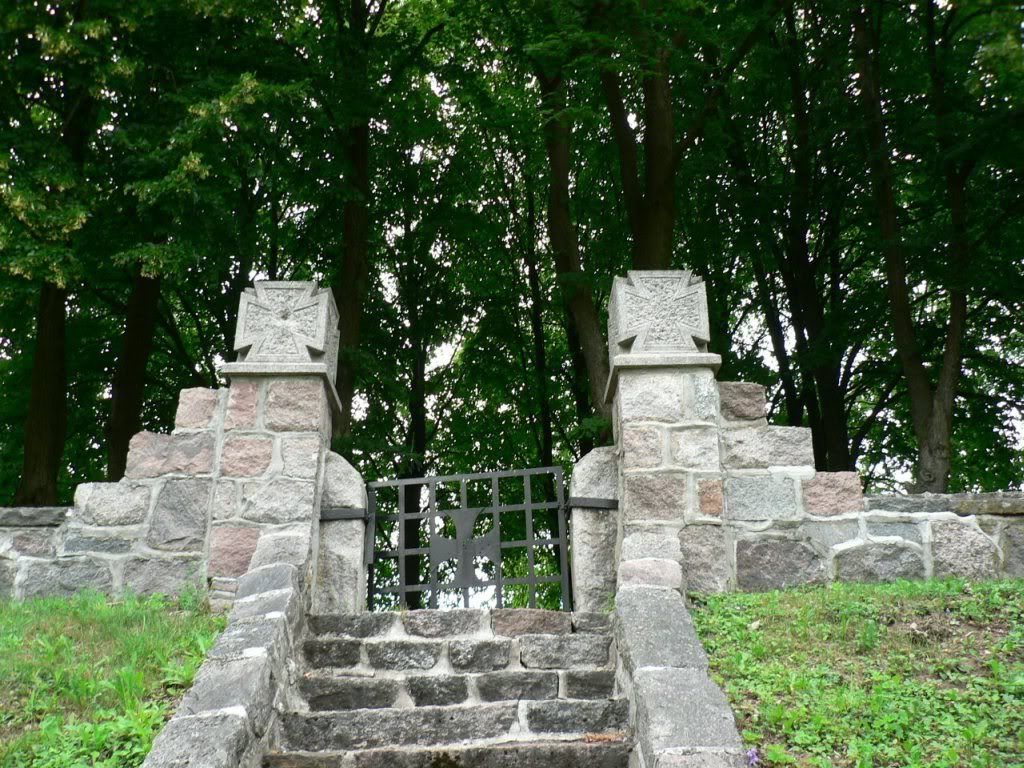
In the central rectangle area German soldiers are buried:
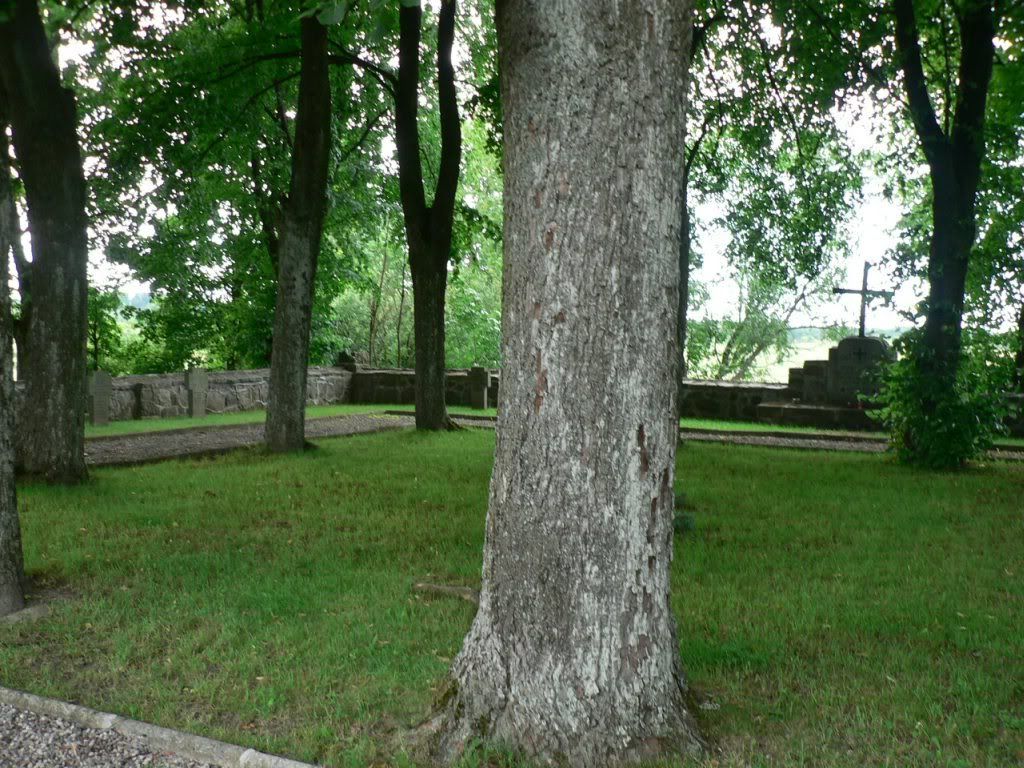
Monument for German soldiers:
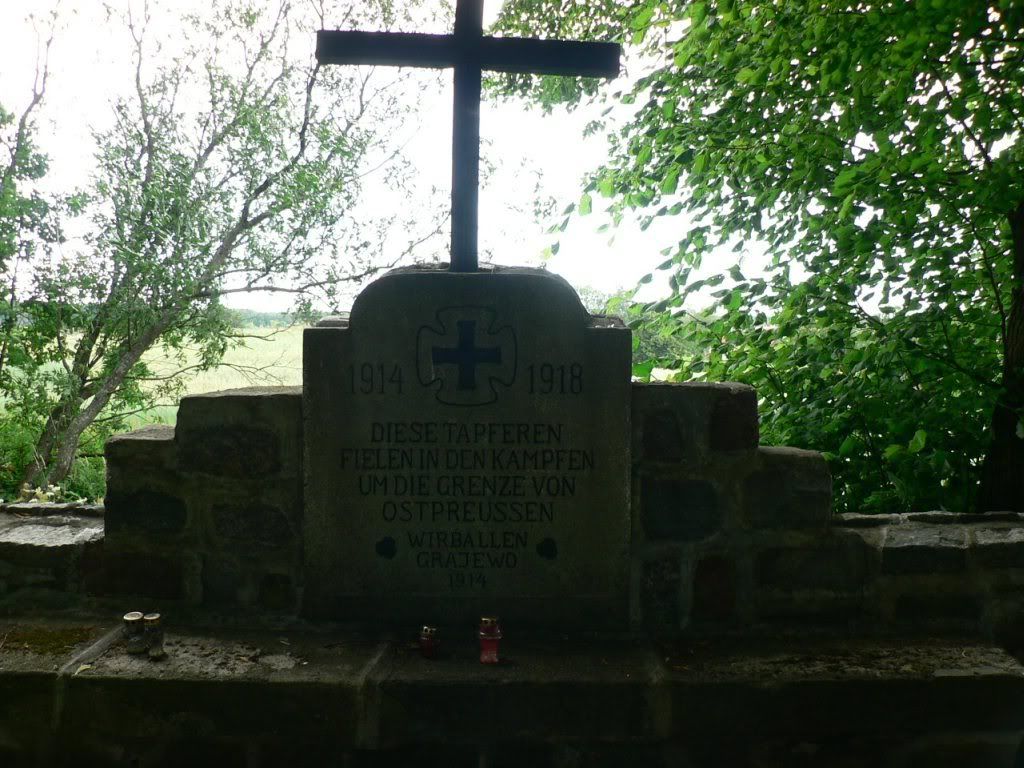
Closer look to the record. "for those who lost lives defending borders of East Prussia"
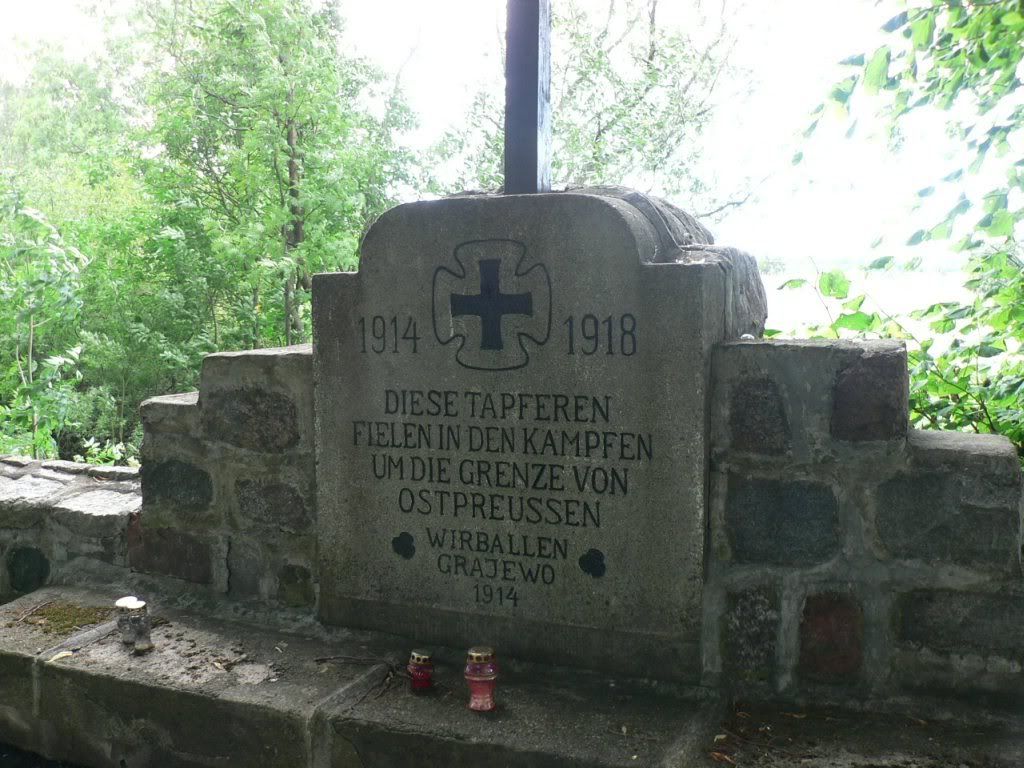
German graves at the sides of the rectangle. You can see Orthodox crosses in distance:
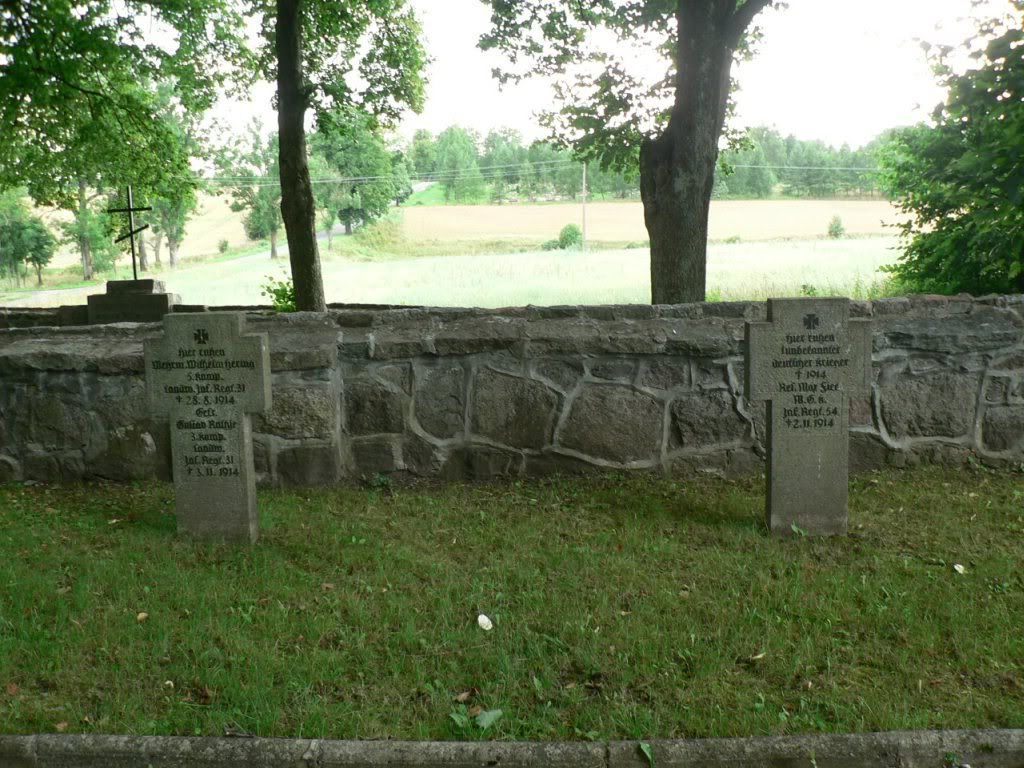
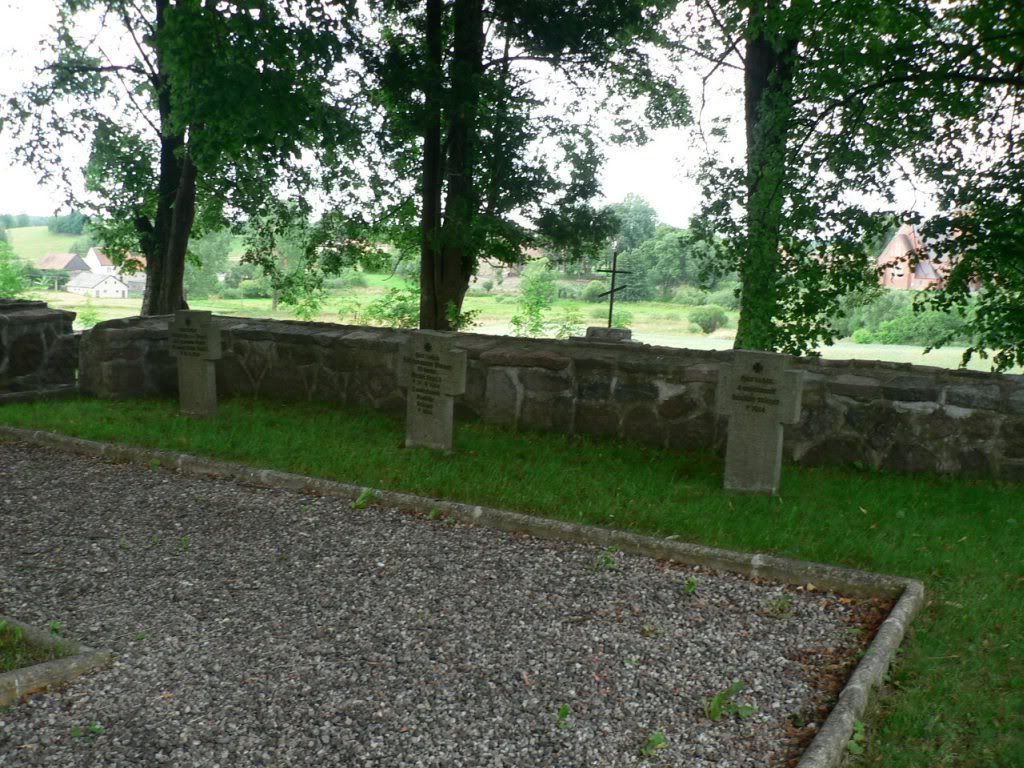
All recordings on the tombs are in good condition:
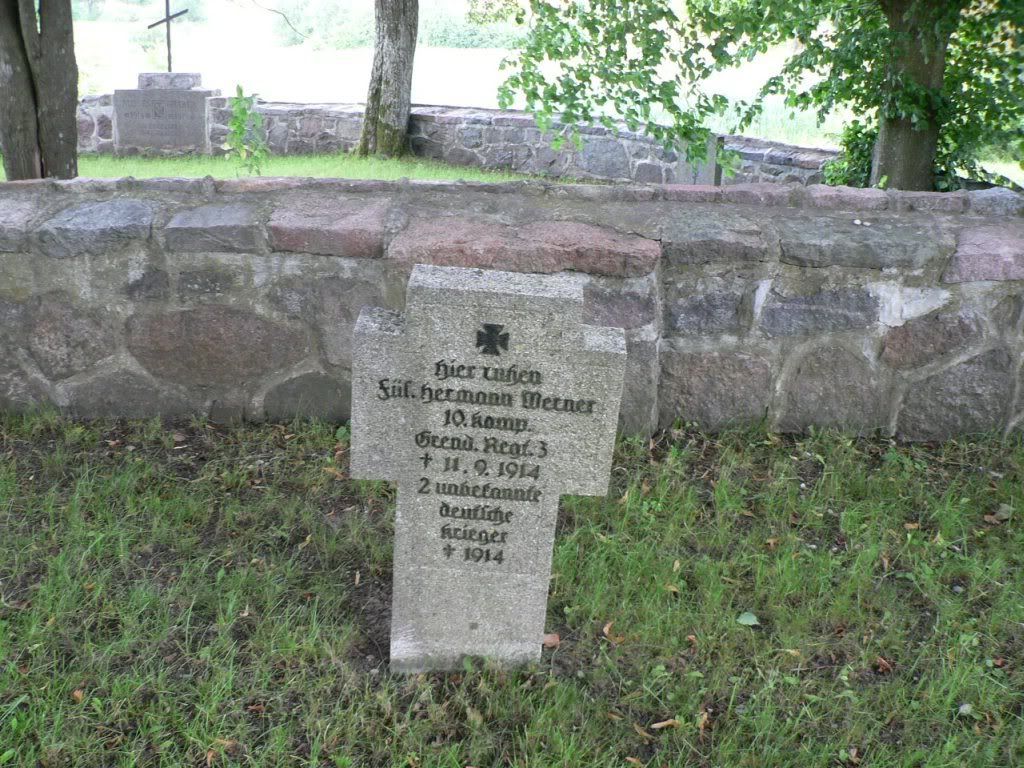
At the left and right sides are two half-circles were fallen Russian soldiers are buried. At each side monument to commemorate them:
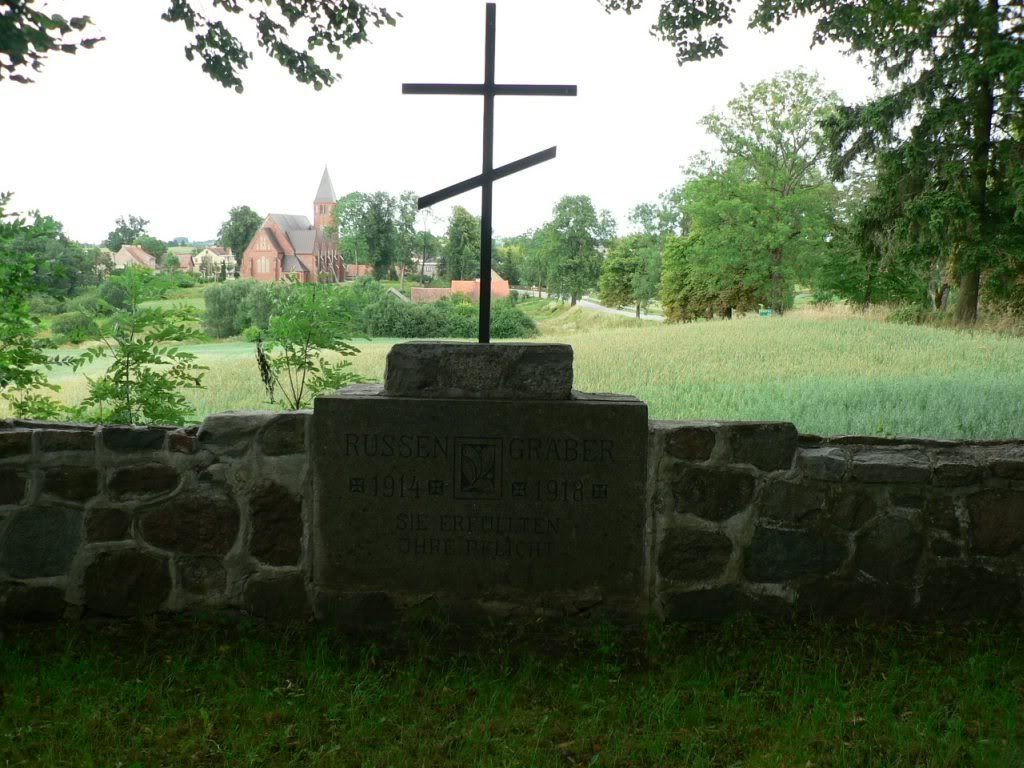
Closer look to the record. " Russians buried. They performed their duties.":
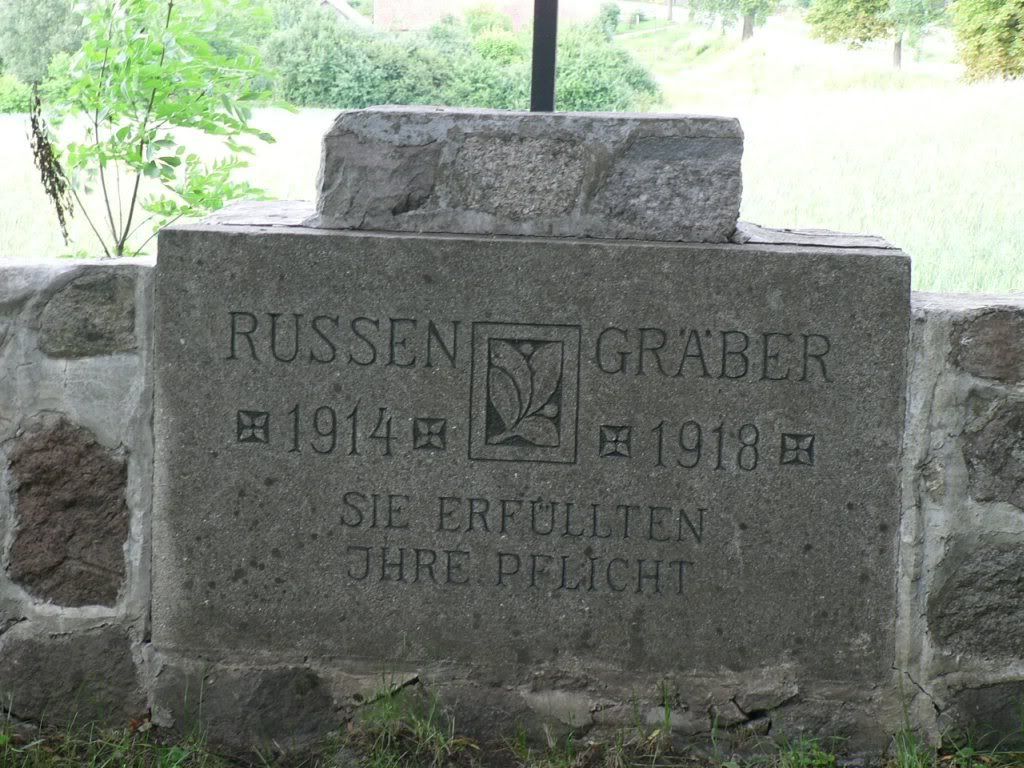
Tombs of Russian soldiers:
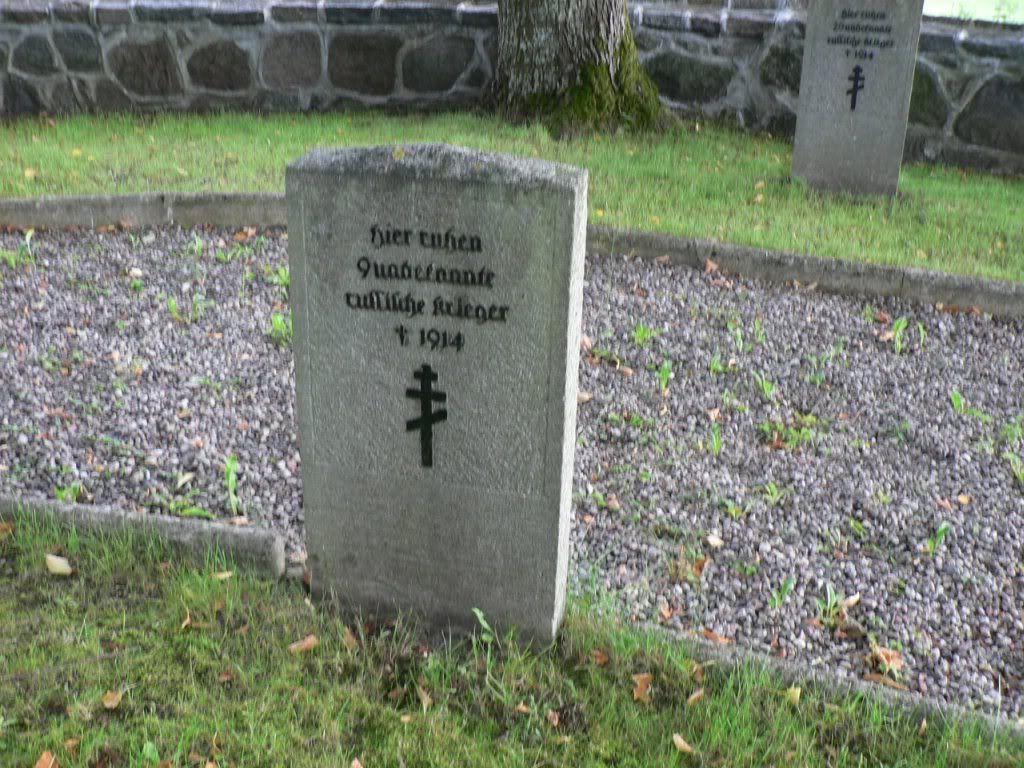
Most of them unknown:
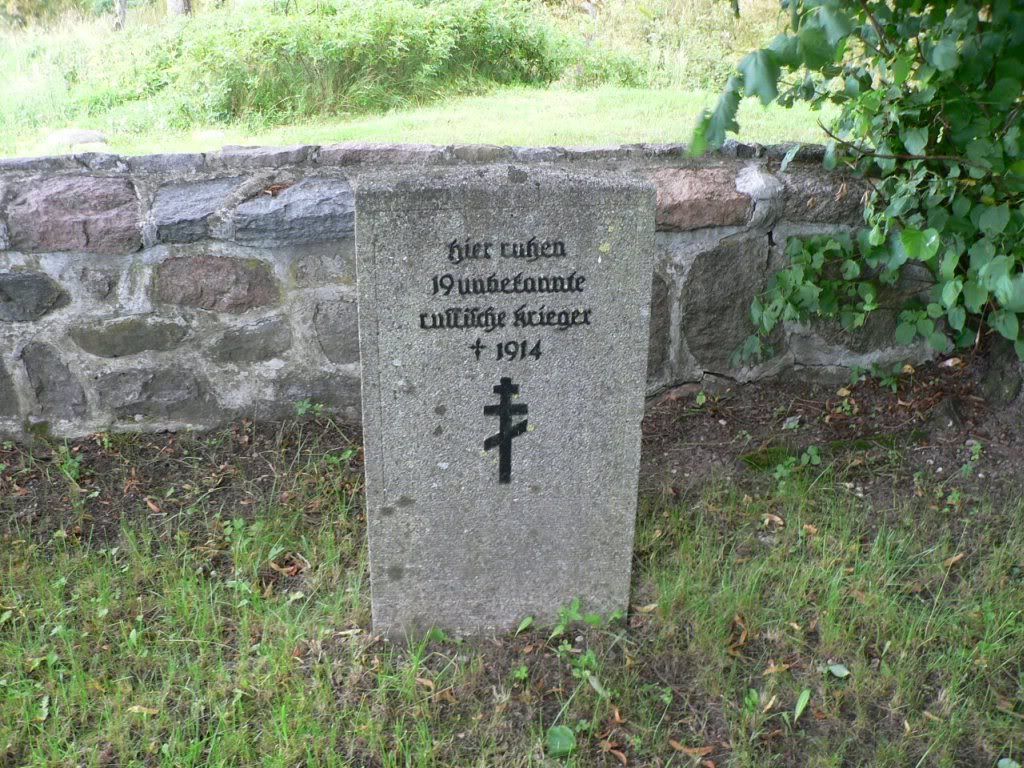
Some identified as leutnant Nikolai Simanovitch from 36th artillery regiment:
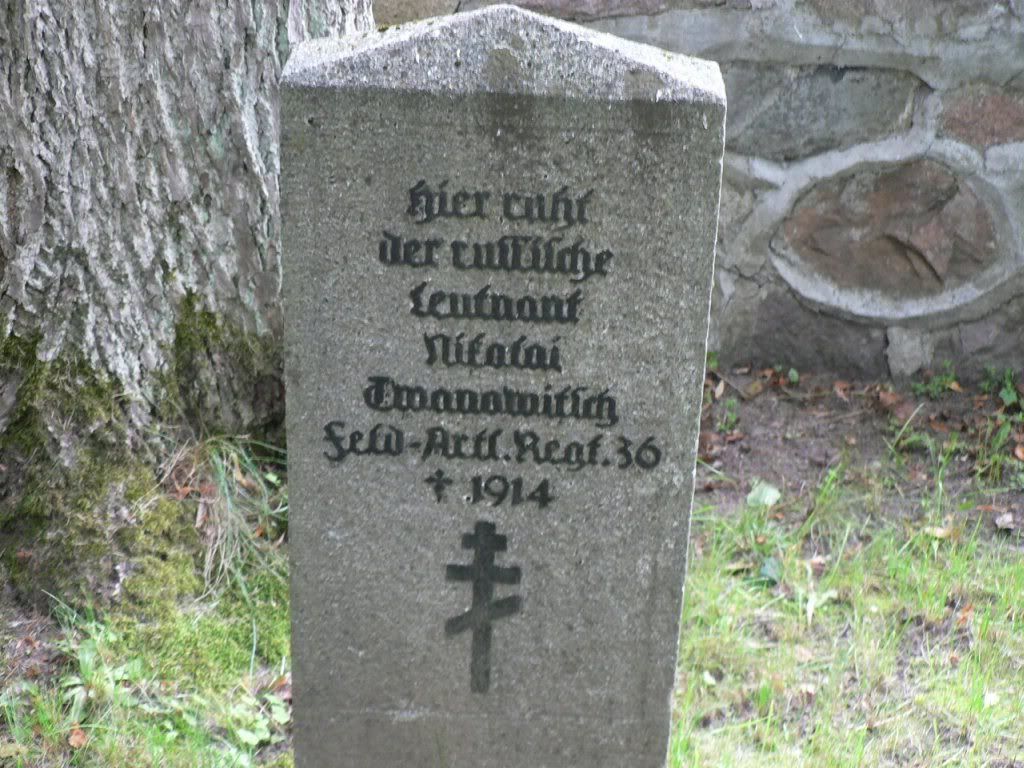
Church of Dubeninki seen from the cemetery:

That's all for the moment. Anyway this report is very big. I will continue next time.

I planed to prepare report about military cemeteries from WWI. But after exploration of my archives I saw that I have materials more than for
one report. So I will present two reports.
The motivation for these reports are my last report from Tauragė and recent news here in Lithuania that government plans to register and restore WWI cemeteries before 2014 or 2018 when world will mark 100th anniversary of WWI. This November world will mark 90th anniversary of the end of WWI.
WWI was probably the last war when fighting sides tried to obey old aristrocratic traditions of war. Of course, it was cruel and bloody war but sides tried to obey some rules. Between them is the treatment of killed persons and organization of cemeteries. For obvious reasons majority of those remaining cemeteries are German (the winner should take care about killed ones).
We will start this report from cemeteries in nowadays Poland, Warmian - Mazurian woewodship. This area was German East Prussia province at the that time. There I must to give honour for Polish authorities since even in PRL times they preserved majority of cemeteries built before WWII.
Our first point of stop is town Elk which at the times of WWI was called Lytzk. It was border town and together with other neighboring towns saw unsuccessful attack of Russian 1st and 2nd armies in 1914.
We are going into the military cemetery of Elk. But advertisement has clear error in Polish and Russian - I never heard about Soviet soldiers in 1914. Records in French and German are correct:

German military monument in the center built in 1921 or 1922. Records on the monument doesn't survived to our days:


Around the monument are the graves of German soldiers killed in WWI:


Tomb's monument for officer is slightly bigger:

One more memorial table with thanks from town's residents:

I am walking around and see grave with bigger memorial:

This is the grave of oberleutnant Richard Billig fallen in 1914 (may be hero ? I don' t know):


Some offtopic but I will present several graves of servicemen who died after WWI. They are more pompastic. This is major who died in 1925:

And tombs of three officers who died in 1935 (accident ?):

Then I am going back to the center and see Orthodox cross:

There are the graves of Russian soldiers and monument to their honor:

At this cemetery there are also graves of German and Polish soldiers killed in 1939 as well as one grave of French soldier (how he managed to be here ?). May be about these tombs sometime later as well as about the town of Elk and other towns in the area.
Now we are going 25 km to the north, to the another former border town Olecko (also called Margrabowa at that time). If in Elk military cemetery occupies part of currently used cemetery then in Olecko it occupies part of now unused old cemetery (cemetery was used from 1725 (!) to 1945).
General look:

Graves of German soldiers at the sides:


Some of them with clear records, some records are lost:


Some graves are shared by several soldiers:

Monument with an unreadable record:

There are several "floors" :

And using stairs we found graves of enemy army soldiers with symbolic monument in the center:


Around this grave of unknown Russian soldier graves of other mostly unknown Russian soldiers:

As well many graves are shared by several soldiers:

Further to the north is village Kowale - Oleckie. In the center of the village there is also cemetery from WWI but road workers did maintenace works in the village and I wasn't allowed to stop for a longer time here. So I did rapidly several photos.
Entrance to the cemetery:

Remaining German monument in the center:

German graves at the left and right sides of the monument:

Russian graves behind the monument:

Next cemetery is the town Goldap which is very close to the Russia's Kaliningrad region. Military cemetery from WWI are at the outskirts in the not well-to-do area.
Table near the entrance:

General view of the cemetery:

Here there are no different areas for different armies. You are going and see that one grave is German while next may be Russian:


Some German tombs are also unknown:


Several identified Russian graves but they died at the last days of the war (illnesses ? wounds ?):

Unknown Russian officer (officers typically don't share the grave):

I was unable to read records on these graves:

And finally last and my favorite cemetery in this report. It is cemetery in the village of Dubeninki built just after the WWI (in 1920-1921).
Entrance to the cemetery:


In the central rectangle area German soldiers are buried:

Monument for German soldiers:

Closer look to the record. "for those who lost lives defending borders of East Prussia"

German graves at the sides of the rectangle. You can see Orthodox crosses in distance:


All recordings on the tombs are in good condition:

At the left and right sides are two half-circles were fallen Russian soldiers are buried. At each side monument to commemorate them:

Closer look to the record. " Russians buried. They performed their duties.":

Tombs of Russian soldiers:

Most of them unknown:

Some identified as leutnant Nikolai Simanovitch from 36th artillery regiment:

Church of Dubeninki seen from the cemetery:

That's all for the moment. Anyway this report is very big. I will continue next time.